Not having any plants around you can be quite depressing. Moreover, if you have a large balcony, then filling it up with stunning plants is a must.
Balconies are the ideal spot for small plants that require sunlight for 60 to 70 percent of the day. However, finding plants that can survive such conditions can be difficult.
That is why we have compiled a list of the most eye-catching plants that can liven up your balconies, especially those that face the west.
30 Potted Plants for West-Facing Balcony
- Geranium
- Cherry Tomatoes
- Petunias
- Begonia
- Sweet Potato Vines
- Vinca
- Marigold
- Hibiscus
- Morning Glory
- Fuchsia
- Strawberries
- Lavender
- Verbena
- Jasmine
- Zinnias
- Lantana
- Mint
- Mecardonias
- Boxwoods
- Caladium Aaron
- Silver saw palmetto
- Mandevilla
- Sunpatiens
- English ivy
- Dwarf papyrus
- Euphorbia
- Sago palms
- Colocasia
- Calibrachoa
- Ageratum
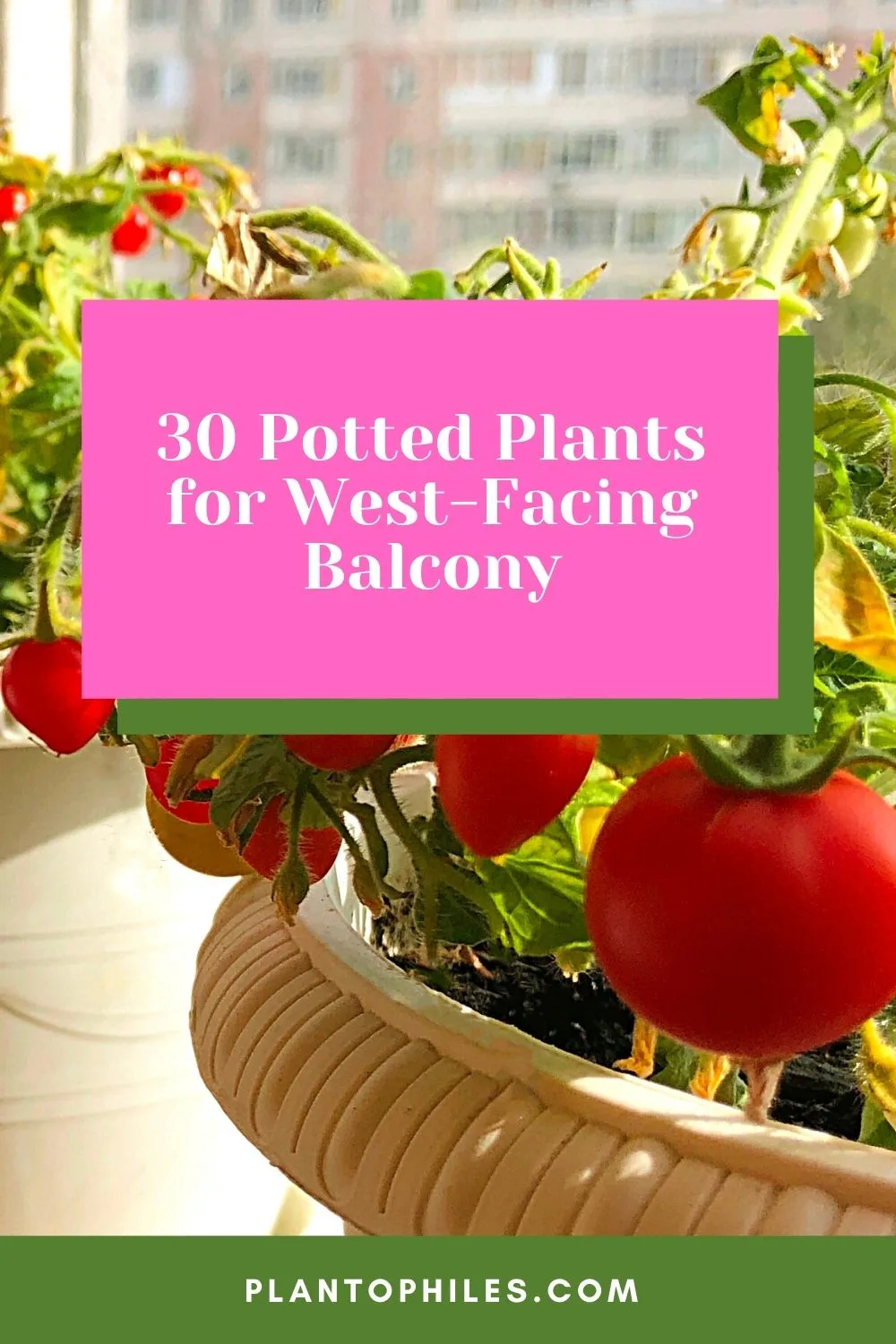
30 Potted Plants for West Facing Balcony
Table of Contents
30 Potted Plants for West-Facing Balcony
1. Geranium
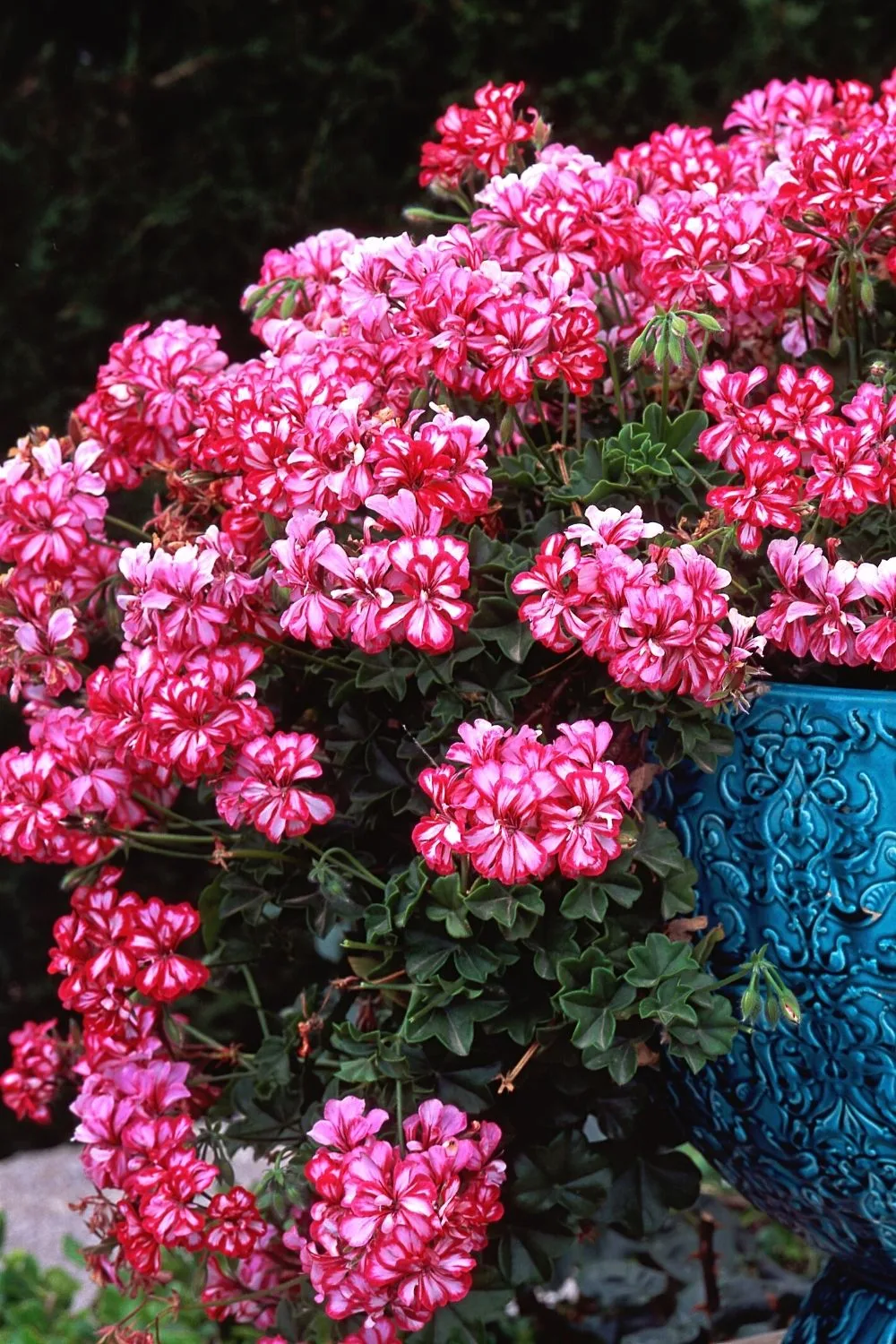
If you’re looking for a plant that grows large blooms in clusters, Geranium is the plant you should grow in a west-facing balcony
If you are looking for large blooms that grow in clusters, then Geranium is the right plant for you.
Its flowers grow in many different colors ranging from pink to red.
Geraniums are also famous for their lovely scent, so if you want your balcony to smell fresh, then this plant is a must-have.
Geraniums grow best in full sun according to the University of Florida.
Geranium’s binomial nomenclature and basic plant care requirements include:
- Temperature: around 60 to 75 degrees Fahrenheit (16-to-24-degree Celsius)
- pH: 0 to 6.5
- Soil: Needs loamy and nutrient-rich soil
- Fertilizer: Needs a balanced fertilizer
- Lighting: full-sun to partial shade
- Growth rate: slow growth
- Humidity: roughly 80%
- Scientific name: Pelargonium
- Family: Geraniaceae
2. Cherry Tomatoes
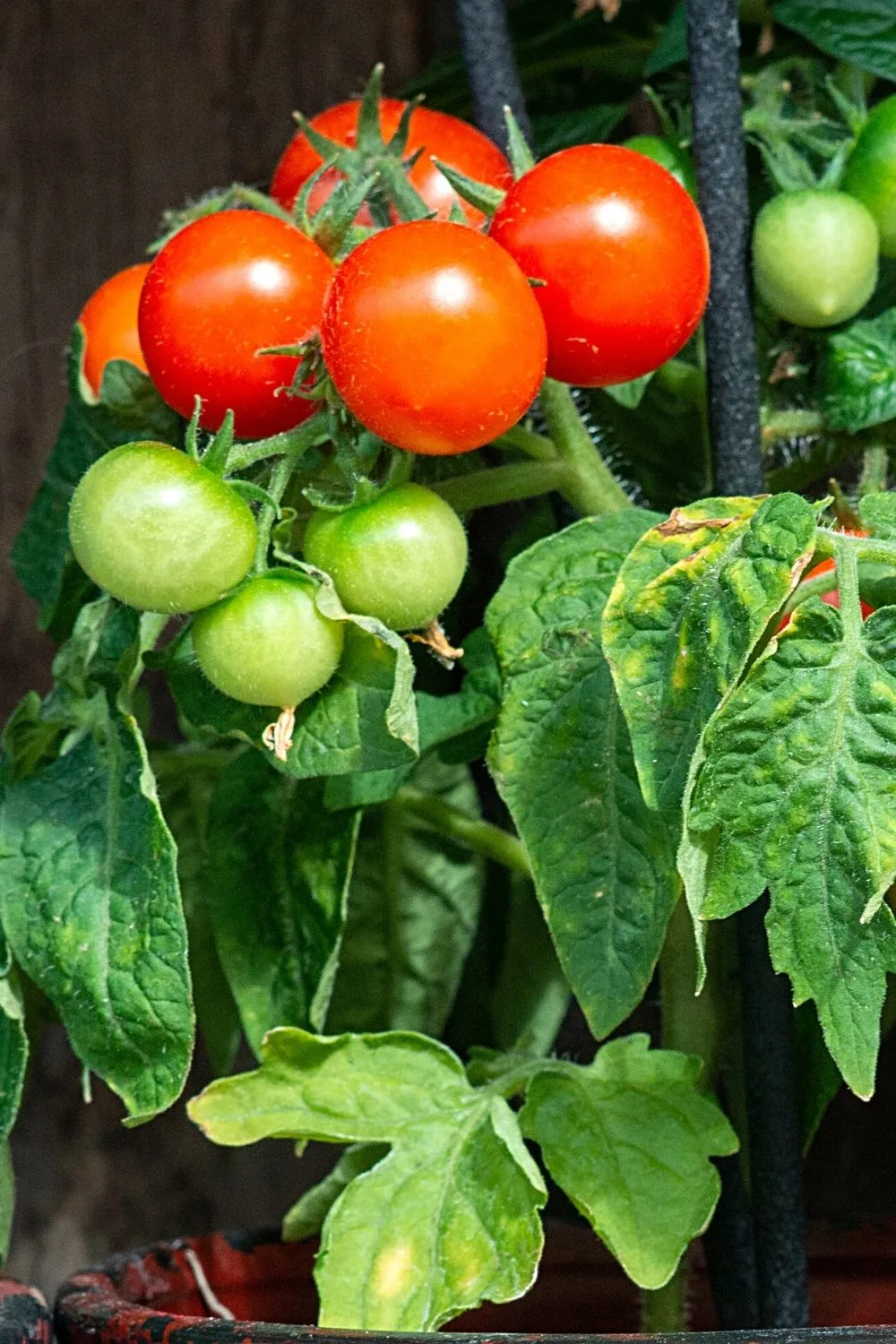
Cherry Tomatoes are great choices for plants to grow in a west-facing balcony if you love salads
Cherry Tomatoes are the perfect plant choice for people who love salads.
As the name suggests, the Cherry Tomato plant grows tiny Tomatoes that are oval-shaped and can easily be grown on your balconies as well.
This plants binomial nomenclature and basic plant care requirements include:
- Temperature: 70 to 85 degrees Fahrenheit (21-to-29-degree Celsius)
- pH: 6.2 to 6.5
- Soil: well-draining soil
- Lighting: bright light for 6 hours
- Growth rate: moderate growth rate
- Fertilizer: Needs fertilization once a month from spring to summer
- Humidity: 65% to 85%
- Scientific name: Solanum lycopersicum var. cerasiforme
- Family: Solanaceae
3. Petunias
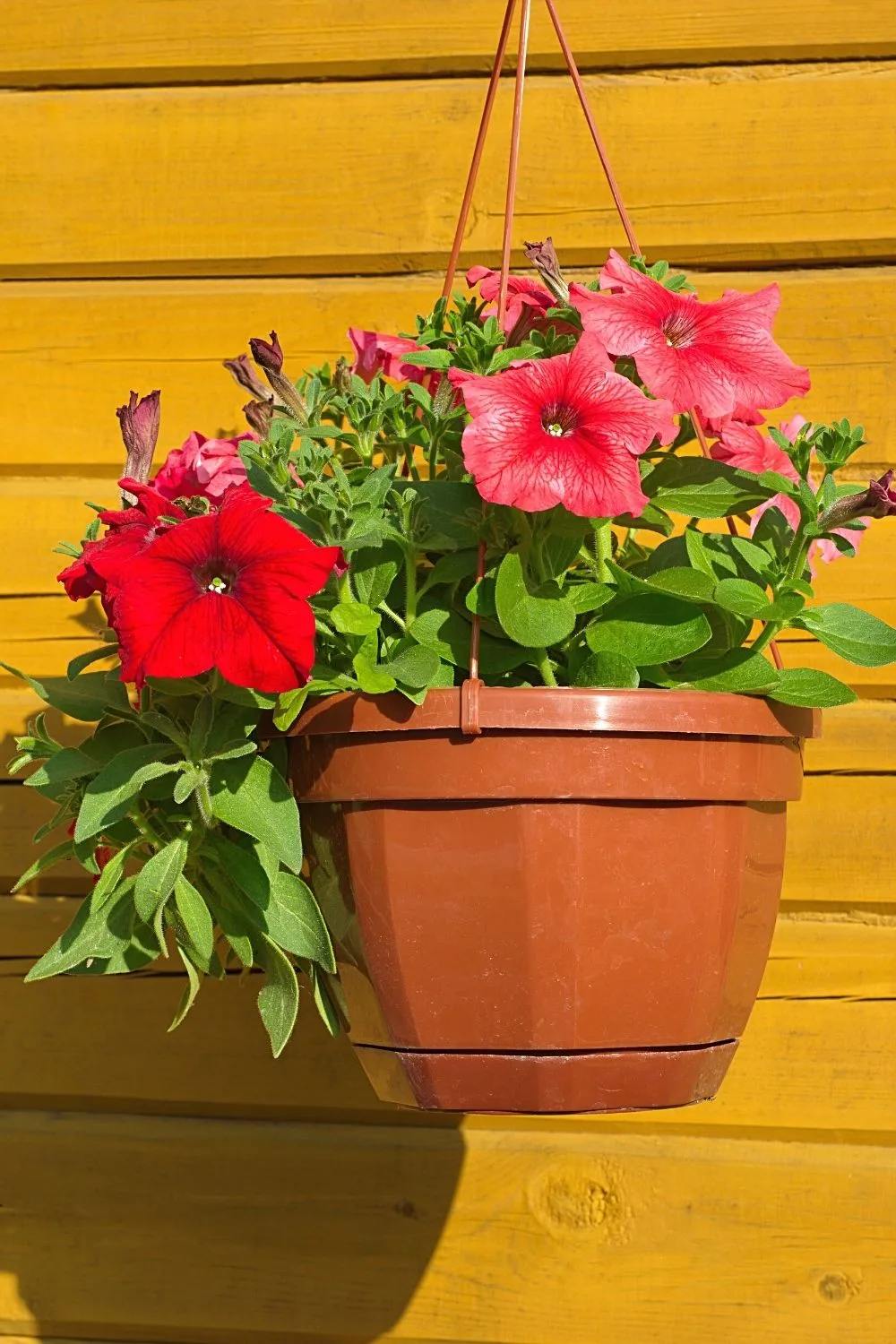
The trumpet-shaped blooms of the Petunias livens any west-facing balcony
The Petunia plant is a popular choice because of its small trumpet-shaped flowers.
The flowers can easily liven up any balcony, and their branching foliage also adds a touch of greenery.
Petunia’s binomial nomenclature and basic plant care requirements include:
- Temperature: 61 to 80 degrees Fahrenheit (16-to-27-degree Celsius)
- Fertilizer: Needs a well-balanced fertilizer during the growing season
- pH: 5.4 to 6.0
- Soil: Needs well-draining fertile soil
- Lighting: bright light for 5 to 6 hours
- Growth rate: Fast
- Humidity: require low humidity levels
- Scientific name: Petunia
- Family: Solanaceae
4. Begonia
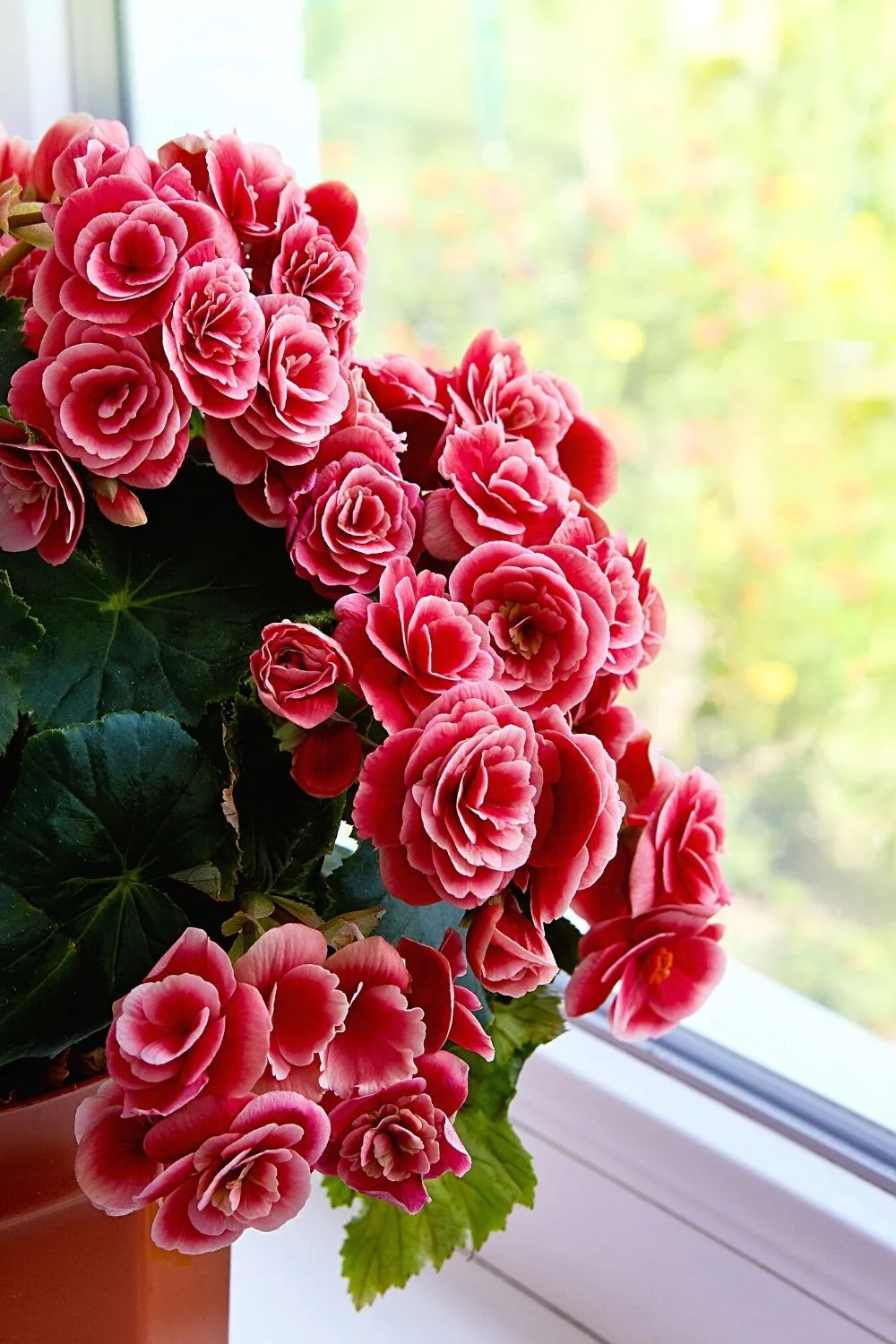
Begonia is another great choice to make a west-facing balcony colorful
Begonias are the perfect plant if you are looking to add more vibrant colors to your balcony. This plant is a perennial herb that has succulent stems and many different colors of flowers.
Begonia’s binomial nomenclature and basic plant care requirements include:
- Temperature: around 60 to 70 degrees Fahrenheit (16-to-21-degree Celsius)
- pH: 5.2 to 6.0
- Soil: Needs light, fertile, well-drained soil
- Fertilizer: Needs to be fertilized with a balanced fertilizer
- Lighting: bright, indirect light
- Growth rate: Fast
- Humidity: around 50%
- Scientific name: Begoniaceae
- Family: Begoniaceae
5. Sweet Potato Vines
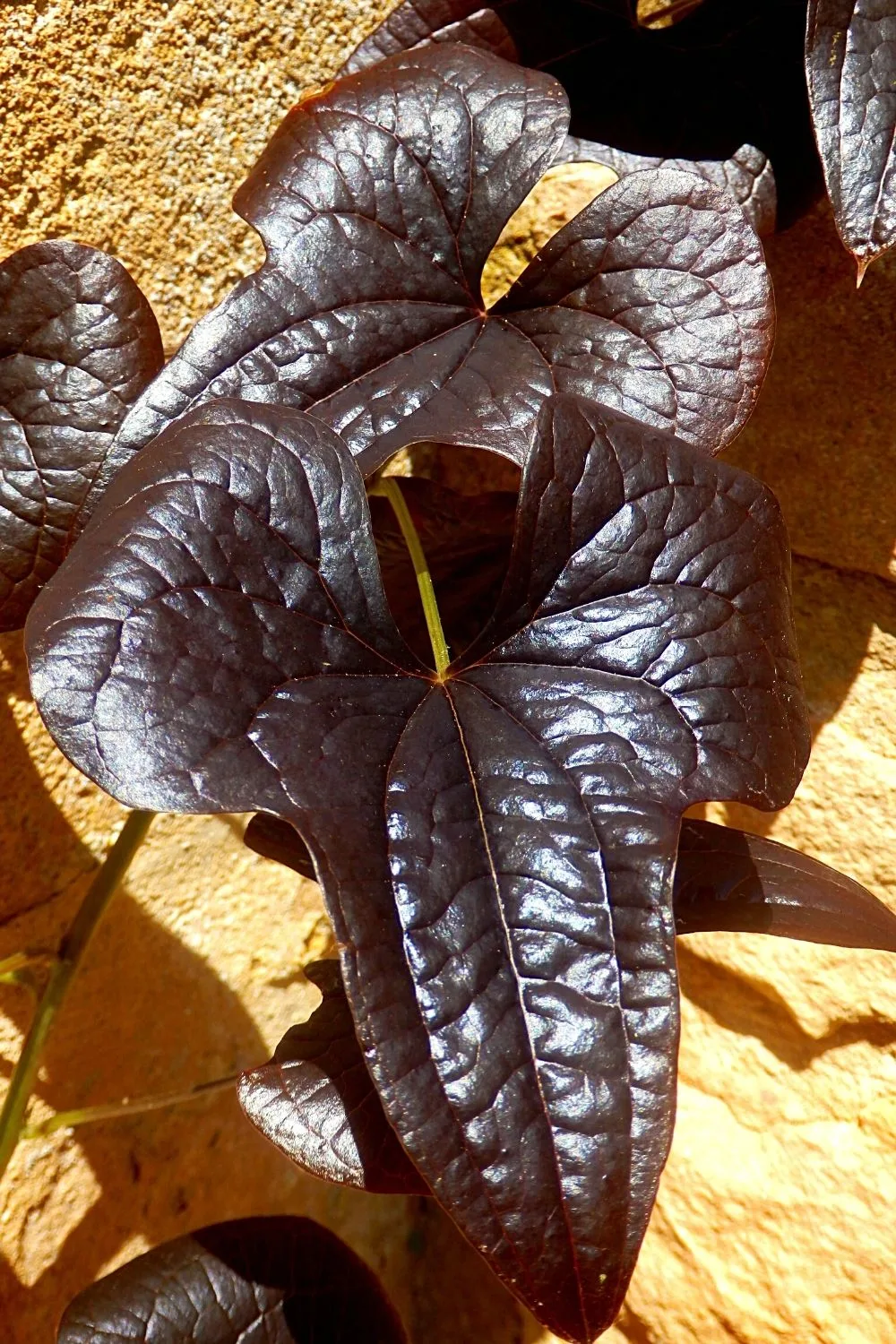
Sweet Potato Vines , famouse for its heart-shaped leaves, is another great choice of plants to grow for a west-facing balcony
Sweet Potato Vines are famous for their heart-shaped leaves and unique island-shaped foliage.
Their foliage grows in many different colors, such as:
- Red
- Purple
- Brown
- Gold
- Chanteuse
- Bronze
Sweet Potato Vines binomial nomenclature and basic plant care requirements include:
- Temperature: 55 to 75 degrees Fahrenheit (13-to-24-degree Celsius)
- Fertilizer: Needs a balanced, slow-release fertilizer
- pH: 5.6 to 6.5
- Soil: Needs moderately rich soil
- Lighting: full-sun to partial shade
- Growth rate: Fast growth
- Humidity: 60-75%
- Scientific name: Lpomoea Pandurata
- Family: Convolvulaceae
6. Vinca
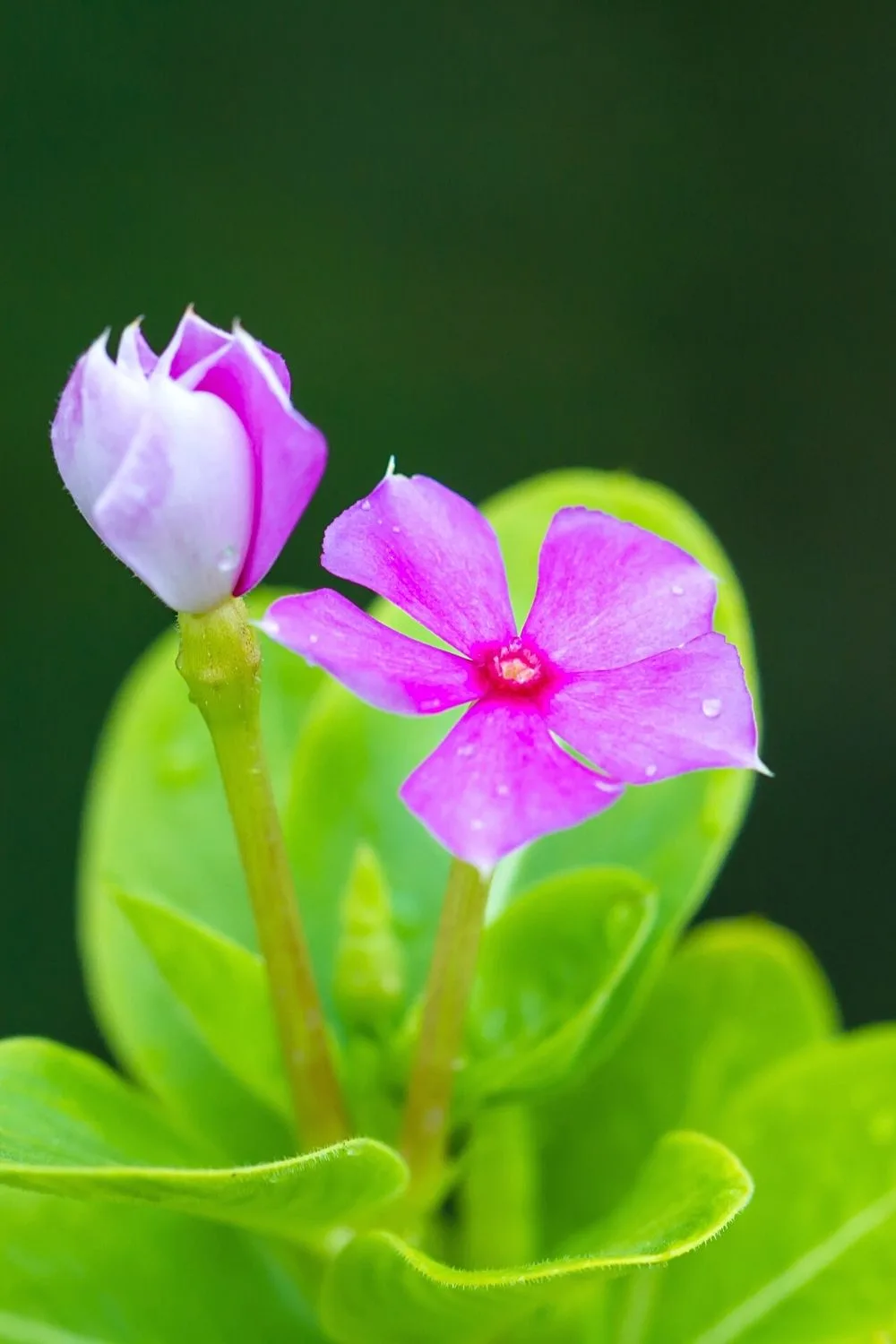
Vinca, aka Periwinkle, is a low-maintenance plant that you can grow in your west-facing balcony
Vinca, also known as periwinkle, is a low-maintenance plant that looks gorgeous hanging over a balcony. Their broadleaf foliage makes for a stunning balcony plant.
Vinca’s binomial nomenclature and basic plant care requirements include:
- Temperature: around 75 to 80 degrees Fahrenheit (24-to-27-degree Celsius)
- pH: 5.5 to 6.0
- Soil: Needs nutrient-rich soil and well-draining soil
- Fertilizer: Needs fertilization once a month with a balanced fertilizer
- Lighting: bright light for eight-plus hours
- Growth rate: Fast
- Humidity: 95% to 100%
- Scientific name: Vinca
- Family: Apocynaceae
7. Marigold
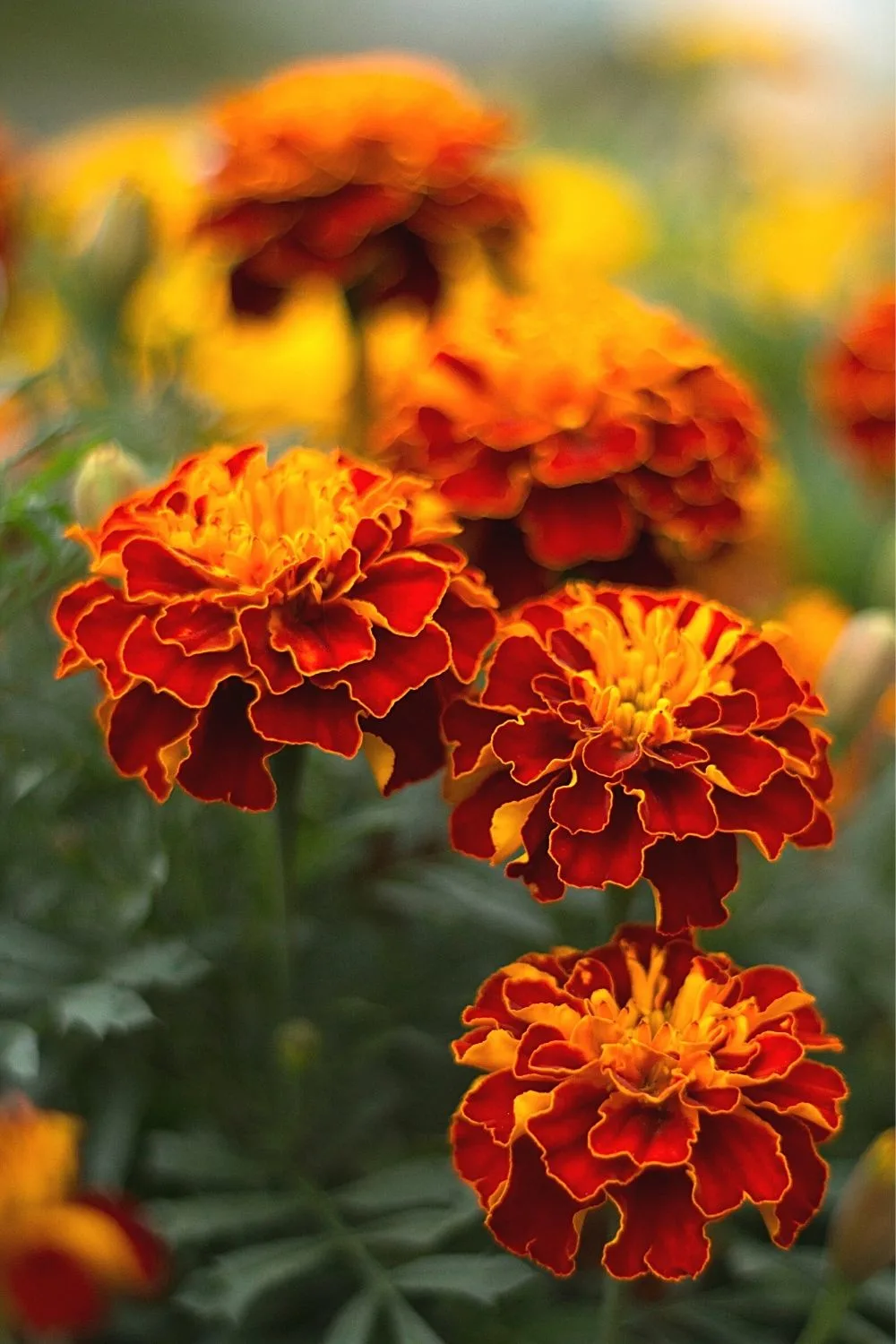
Marigold is another sunshine-colored plant that you can grow in your west-facing balcony
Marigold is the best plant to keep on your balcony if you are trying to bring more sunshine colors.
This stunning plant can be found in a variety of colors, such as:
- Dark orange
- Red
- Yellow
You can also find it in other colors, such as orange petals with red edges or yellow petals with red stripes.
Marigold’s binomial nomenclature and basic plant care requirements include:
- Temperature: around 70 to 75 degrees Fahrenheit (21-to-24-degree Celsius)
- Fertilizer: doesn’t need a lot of fertilizer when grown in organic soil
- pH: 6.0 to 7.0
- Soil: moderately fertile, well-drained soil
- Lighting: partial shade to full sun
- Growth rate: Fast growth rate
- Humidity: 90% relative humidity
- Scientific name: Tagetes
- Family: Asteraceae
8. Hibiscus
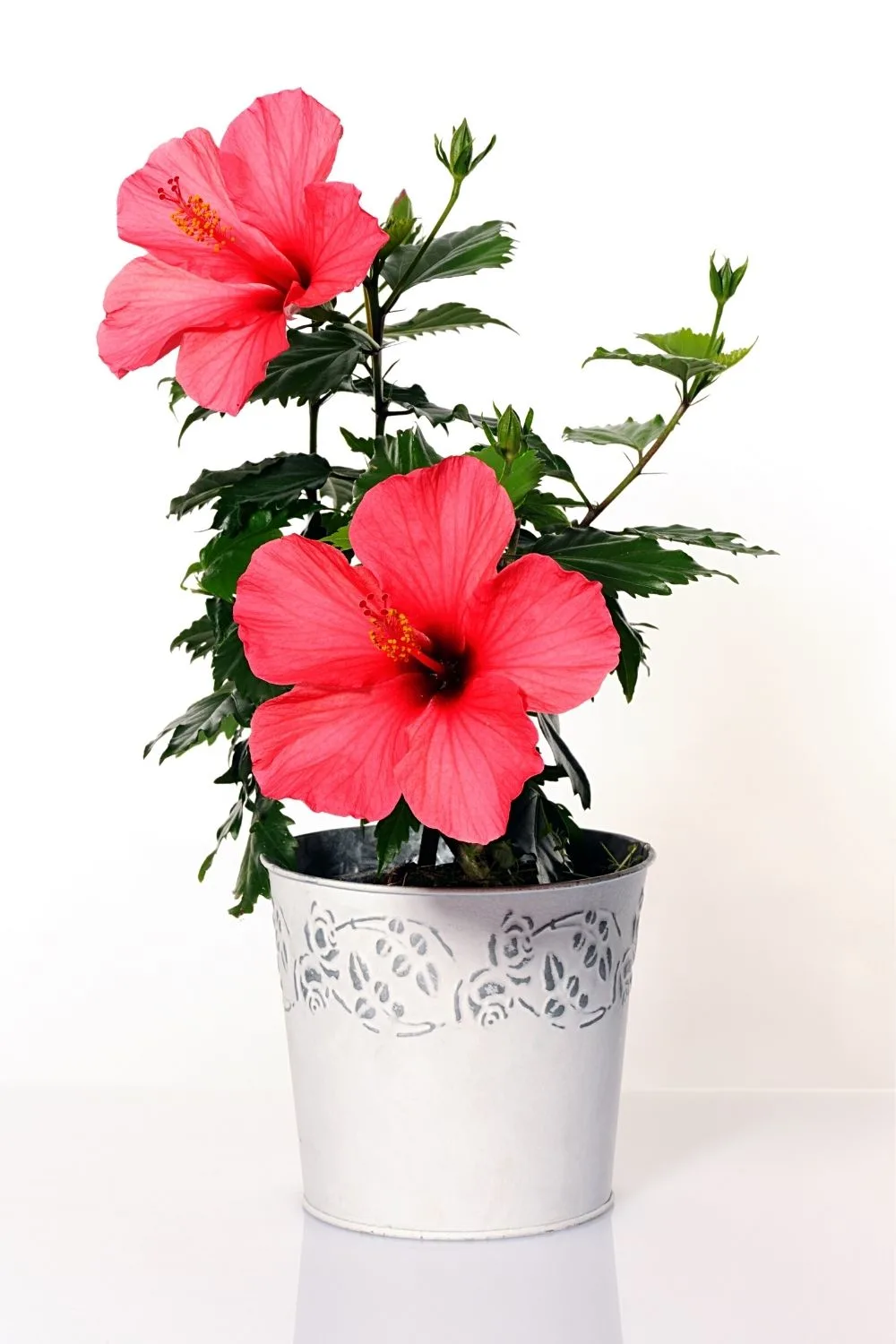
Hibiscus is another colorful plant that you can add to your growing collection in a west-facing balcony
Hibiscus is the best choice for you if you are looking for a plant that can add more flair to your collection.
This plant has trumpet-shaped flowers and stunning stamens that will bring uniqueness to your collection like no other plant.
Hibiscus blooms consistently, but sadly the blooms only last for a single day.
Hibiscus plant’s binomial nomenclature and basic plant care requirements include:
- Temperature: 60 to 85 degrees Fahrenheit (16-to-29-degree Celsius)
- Fertilizer: Needs fertilization once a month in spring with a well-balanced fertilizer
- pH: 6.5 and 6.8
- Soil: Needs moist but well-drained
- Lighting: does best under the full sun but can grow under partial shade
- Growth rate: Moderate to Fast growth
- Humidity: moderate to high humidity
- Scientific name: Hibiscus
- Family: Malvaceae
9. Morning Glory
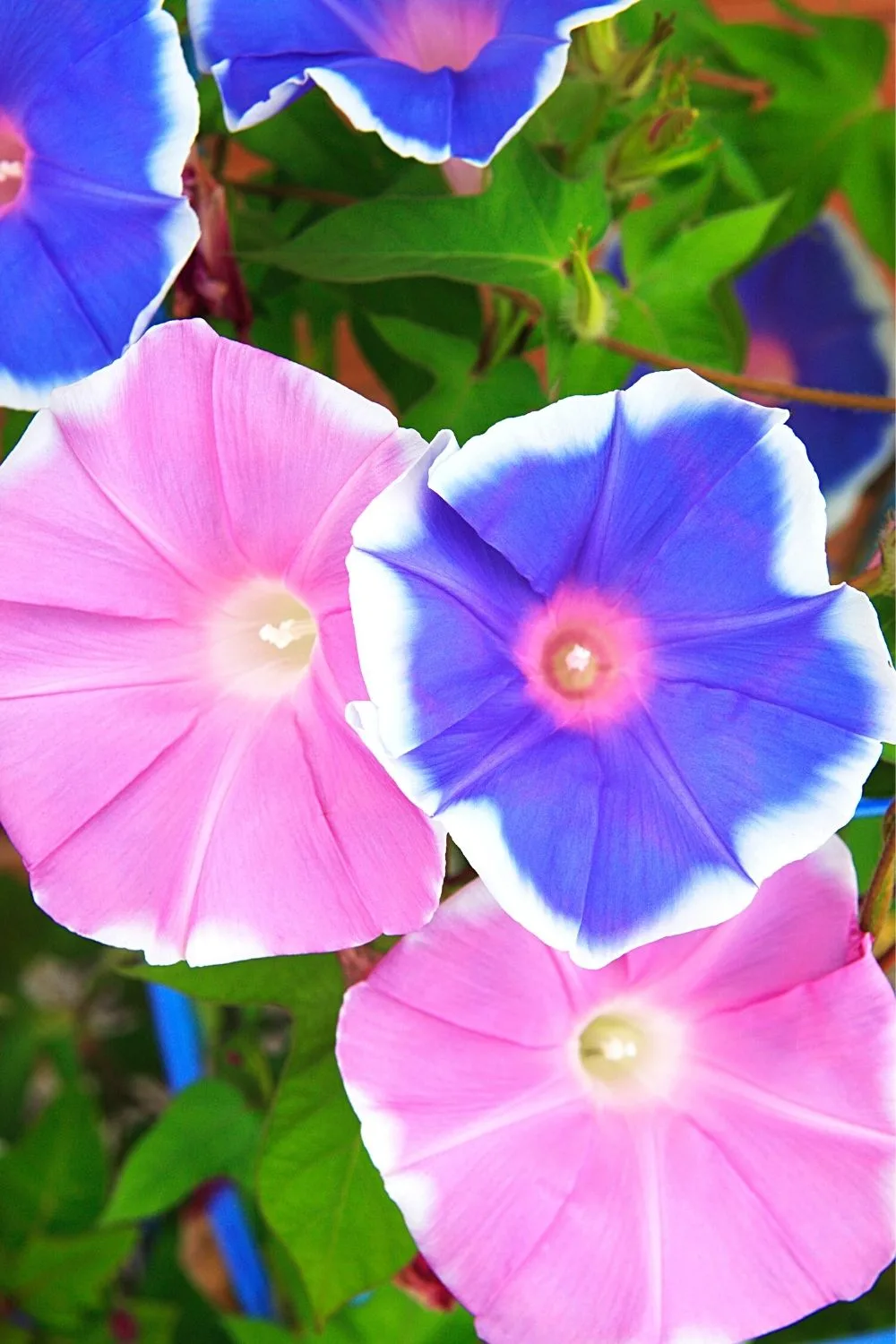
Morning Glory is another colorful flower with trumpet-shaped blooms that you can grow on your west-facing balcony
Morning Glory, also known as Common Morning Glories, are stunning plants that also grow trumped-shaped flowers.
This plant grows blooms in shades of purple and blue that add a charm and romantic vibe to your collection of plants.
Morning Glory’s binomial nomenclature and basic plant care requirements include:
- Temperature: 45 to 65 degrees Fahrenheit (7-to-18-degree Celsius)
- Fertilizer: can grow without fertilizer but produces fewer flowers.
- pH: 6.0 to 6.8
- Soil: Needs moderately fertile and well-drained soil that is moist
- Lighting: full sun but will tolerate very light shade
- Growth rate: Fast growth rate
- Humidity: no special humidity requirements
- Scientific name: Ipomoea
- Family: Convolvulaceae
10. Fuchsia
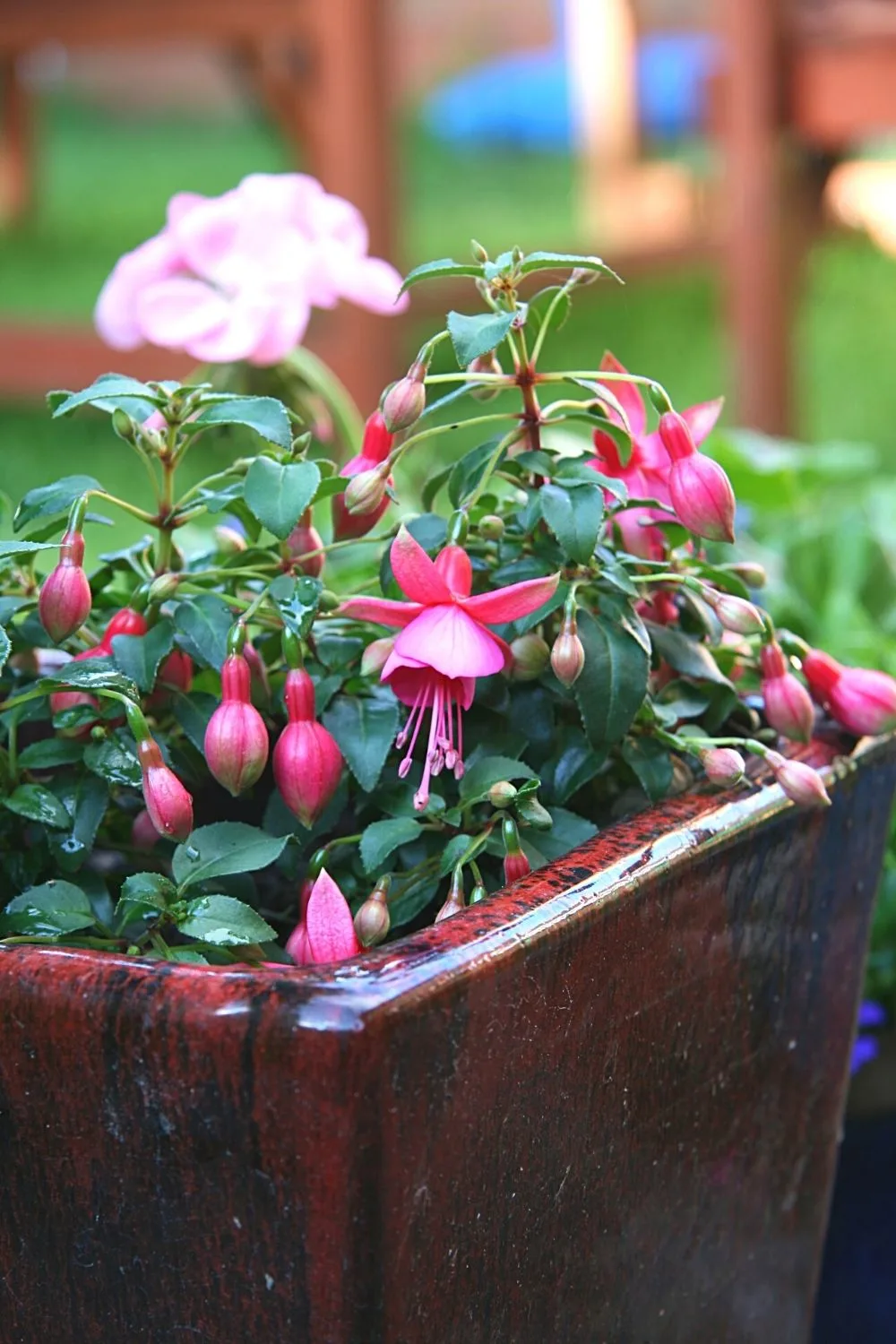
Though it’s a common ground plant, Fuchsia can also be grown on a west-facing balcony
The Fuchsia plant is a common plant grown in outdoor gardens, but it can even be grown on your balconies.
This plant produces a large number of bell-like flowers for several months, ranging from summer to early fall.
Fuchsia’s binomial nomenclature and basic plant care requirements include:
- Temperature:
- Fertilizer: Needs well-balanced fertilizer
- pH: 6 to 7
- Soil: Needs moist but not soggy soil
- Lighting: full sun or partial shade
- Growth rate: Fast growth rate
- Humidity: 40% or higher
- Scientific name: Fuchsia
- Family: Onagraceae
11. Strawberries
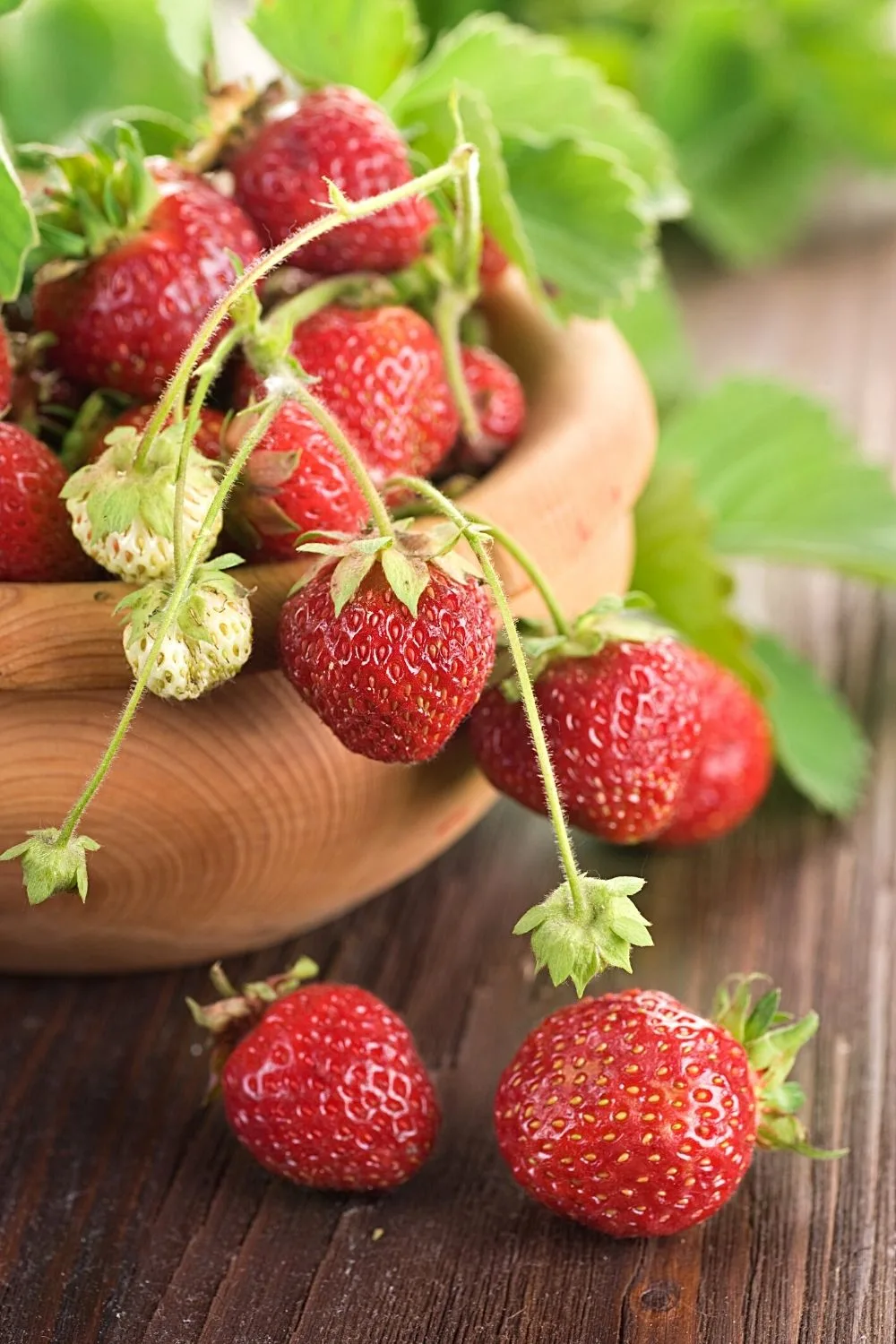
Strawberries can also be grown on your west-facing balcony in pots
Strawberries are not an uncommon sight in the grocery store, but you can even grow this plant in your home, on your balconies.
If you are interested in growing your own fruits and vegetables, then strawberries are a must-have in your collection.
Strawberry’s binomial nomenclature and basic plant care requirements include:
- Temperature: around 55 to 80 degrees Fahrenheit (13-to-27-degree Celsius)
- Fertilizer: Needs to be fertilized with a balanced fertilizer
- pH: 3.0 to 3.5
- Soil: Needs nutrient-rich soil that has organic matter mixed with peat and Perlite
- Lighting: bright light for 6 hours
- Growth rate: moderate to slow growth
- Humidity: 90% to 95%
- Scientific name: Fragaria × ananassa
- Family: Rosaceae
12. Lavender
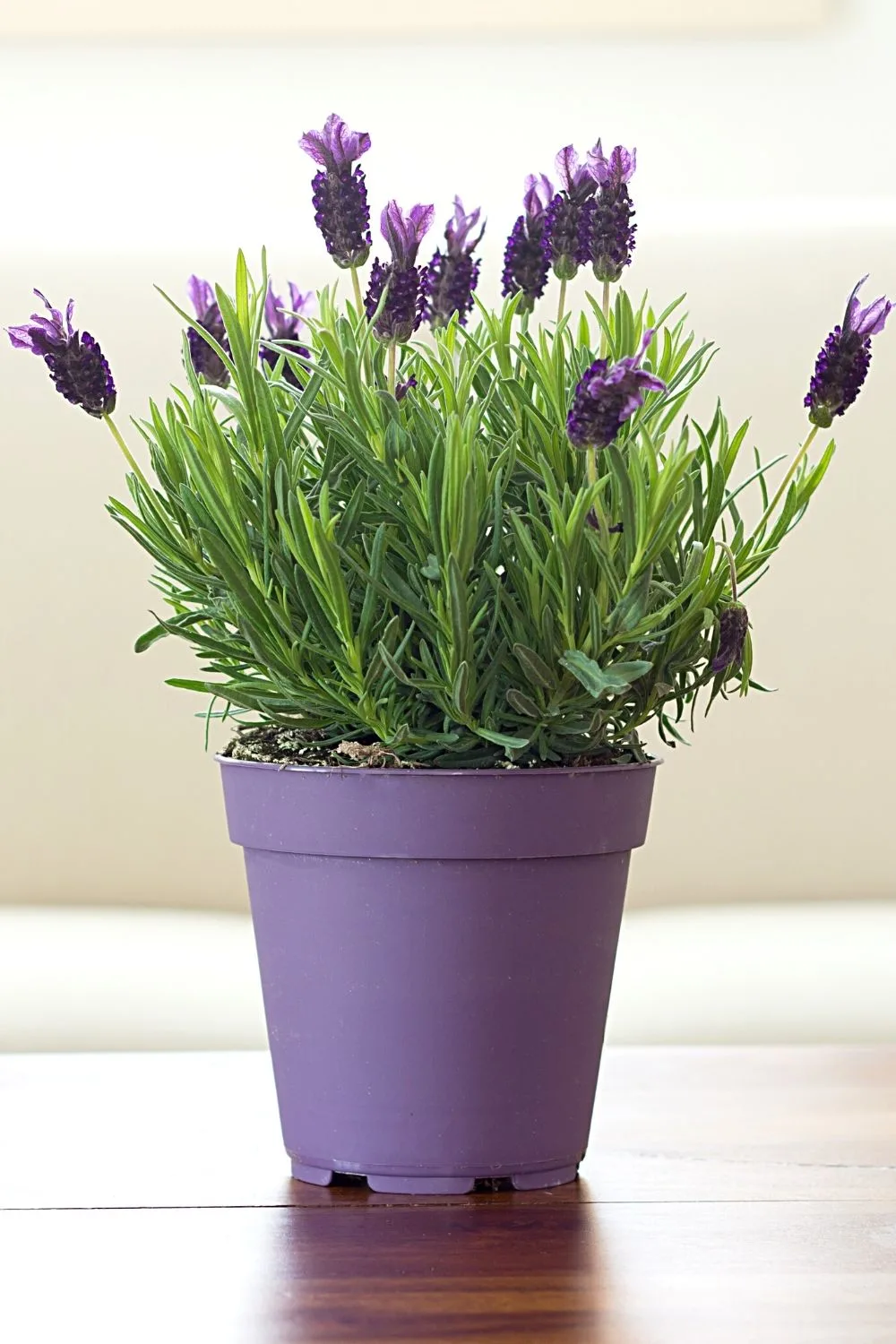
Lavender is a fragrant plant you can grow in a pot on a west-facing balcony
Lavender is a beautifully scented plant that grows like a bush if planted in pots. This plant has lovely lavender-colored flowers that produce the most wonderful fragrance.
Lavender’s binomial nomenclature and basic plant care requirements include:
- Temperature: 55 to 70 degrees Fahrenheit (13-to-21-degree Celsius)
- Fertilizer: Needs fertilization once a month from spring to summer
- pH: 6.7 to 7.3
- Soil: Needs sandy and well-draining soil
- Lighting: bright light for 3 to 4 hours
- Growth rate: Moderate to Fast growth
- Humidity: 40%
- Scientific name: Lavandula
- Family: Lamiaceae
13. Verbena
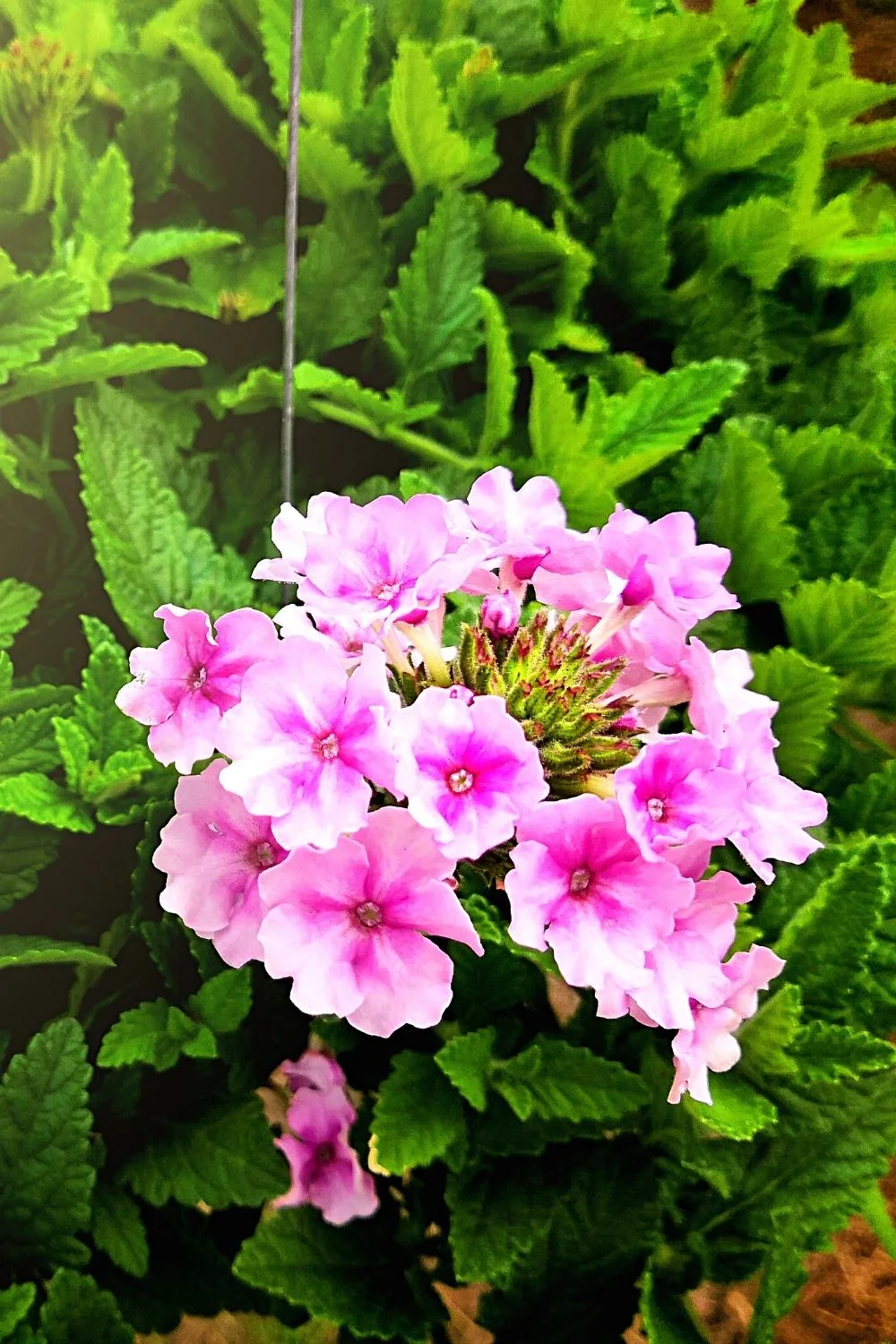
Verbena is another beautiful plant to grow on a west-facing balcony
Verbena can be grown in hanging baskets because they can be grown dangling down. This plant is available in several different ranges of colors and sizes.
Verbena binomial nomenclature and basic plant care requirements include:
- Temperature: around 65 to 75 degrees Fahrenheit (18-to-24-degree Celsius)
- Fertilizer: Needs Organic matter mixed into the soil
- pH: 5.8 to 7.2
- Soil: Needs well-draining soil
- Lighting: bright light for 8 hours
- Growth rate: Fast
- Humidity: 40% to 60%
- Scientific name: Vervain
- Family: Verbenaceae
14. Jasmine

Jasmine is a climbing shrub you can grow on a west-facing balcony
Jasmine is a common semi-evergreen plant that can be grown as a climbing shrub. This plant has a pleasant scent to it and has a simple yet elegant look.
Jasmine plants binomial nomenclature and basic plant care requirements include:
- Temperature: 60 to 75 degrees Fahrenheit (16-to-24-degree Celsius)
- Fertilizer: Needs fertilization once a month from spring to summer
- pH: 4.9 and 8.3
- Soil: Needs moist, but well-draining and moderately fertile sandy, loamy soil
- Lighting: bright light for 6 hours or partial shade
- Growth rate: Fast growth
- Humidity: 70% to 90%
- Scientific name: Jasminum
- Family: Oleaceae
15. Zinnias
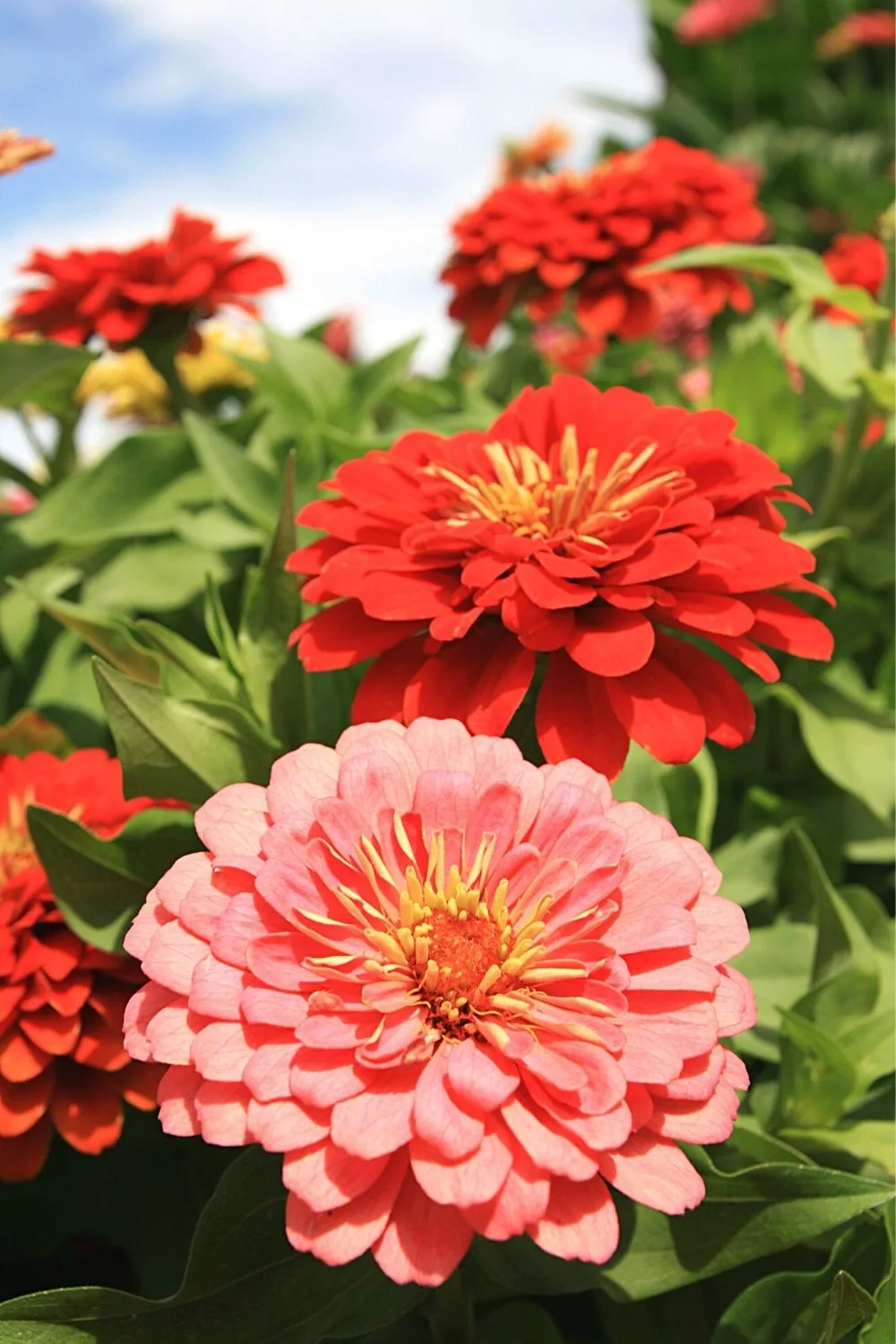
Zinnias are another colorful addition to your west-facing balcony plant collection
Zinnias is a rewarding summer plant since it blooms during the summer season. It has vibrant blooms that last for a long time, ranging from early summer to early winter.
Zinnias binomial nomenclature and basic plant care requirements include:
- Temperature: 75 to 85 degrees Fahrenheit (24-to-29-degree Celsius)
- Fertilizer: Needs to be fertilized often with a balanced fertilizer
- pH: 5.5 to 7.5
- Soil: Needs fertile, well-draining, and organic matter-rich soils
- Lighting: bright light for 6 hours
- Growth rate: Fast growth rate
- Humidity: 60% to 80%
- Scientific name: Zinnia
- Family: Asteraceae
16. Lantana
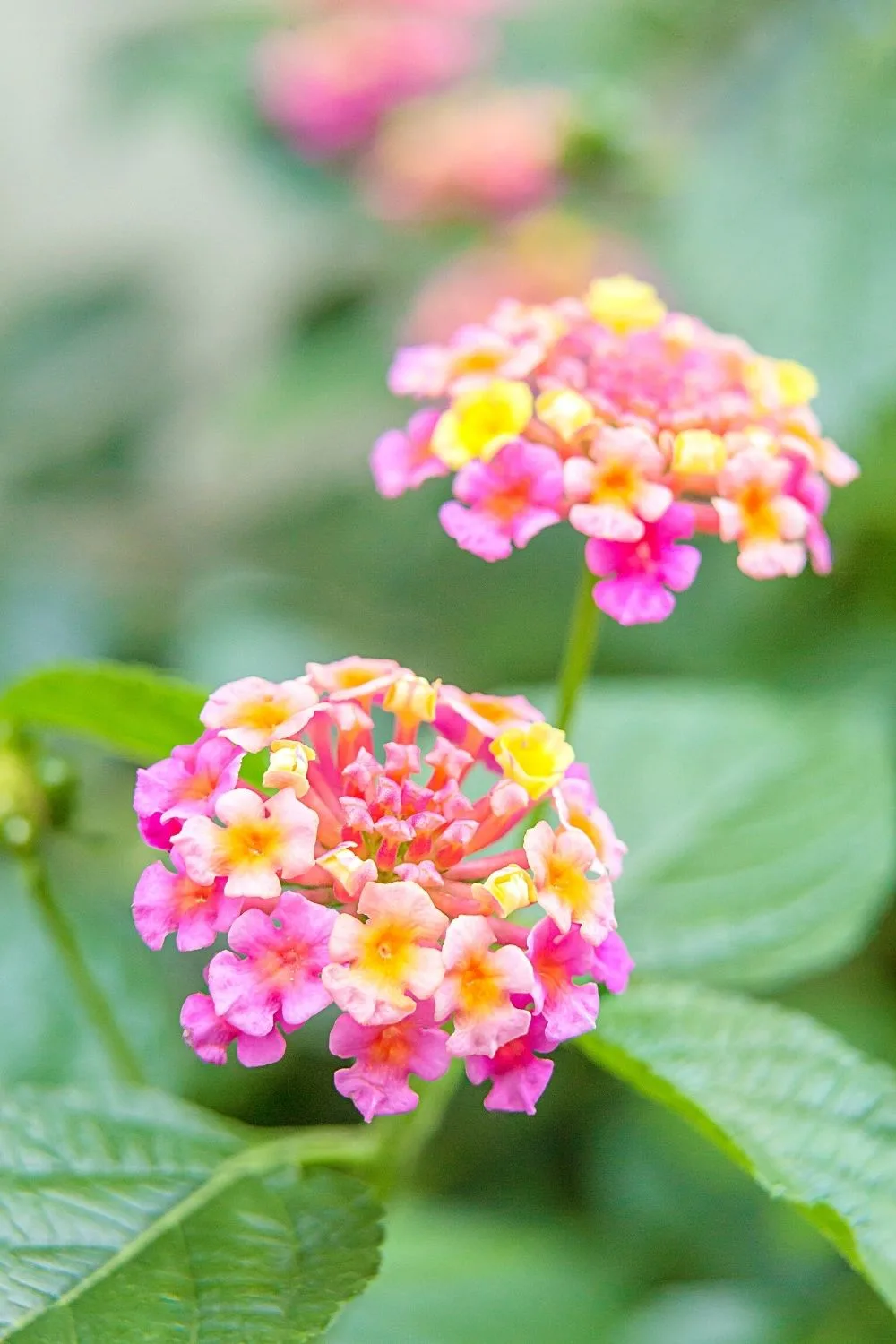
Lantana. though colorful and can be grown on a west-facing balcony, is harmful to your pets
Lantana has stunning foliage, which can be harmful to pets. This beautiful plant is grown for its flowers (and if your Lantana doesn’t bloom, better investigate the cause) that grow in tiny clusters.
Lantanas binomial nomenclature and basic plant care requirements include:
- Temperature: around 55 to 80 degrees Fahrenheit (13-to-27-degree Celsius)
- pH: 6.0 to 6.5
- Soil: well-draining and acidic soil
- Fertilizer: Needs fertilization in early spring
- Lighting: full-sun
- Growth rate: Fast growth rate
- Humidity: above 70%
- Scientific name: Lantana camara
- Family: verbena
17. Mint
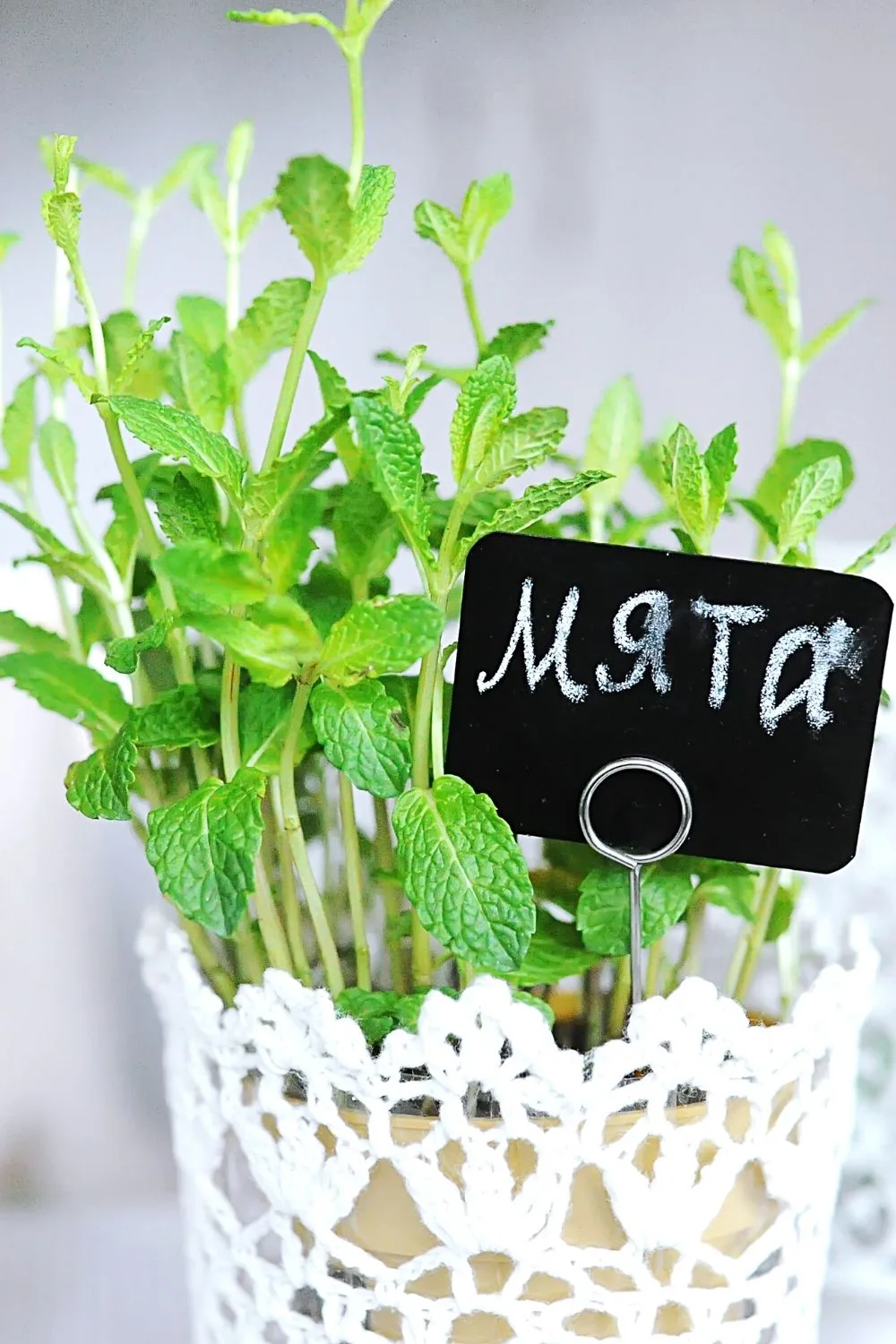
Mint is an herb that you can easily grow on your west-facing balcony
Mint is a herb that is often used in cooking. It also has several health benefits, such as improving irritable bowel syndrome, and contains many nutrients.
Mint’s binomial nomenclature and basic plant care requirements include:
- Temperature: 55 to 70 degrees Fahrenheit (13 to 21 degrees Celsius)
- Fertilizer: Needs fertilization every 4-6 weeks in early spring
- pH: 6.0 to 7.0
- Soil: well-draining and moist soil
- Lighting: full-sun
- Growth rate: moderate to fast growth rate
- Humidity: 45% to 55%
- Scientific name: Mentha
- Family: Lamiaceae
18. Mecardonias
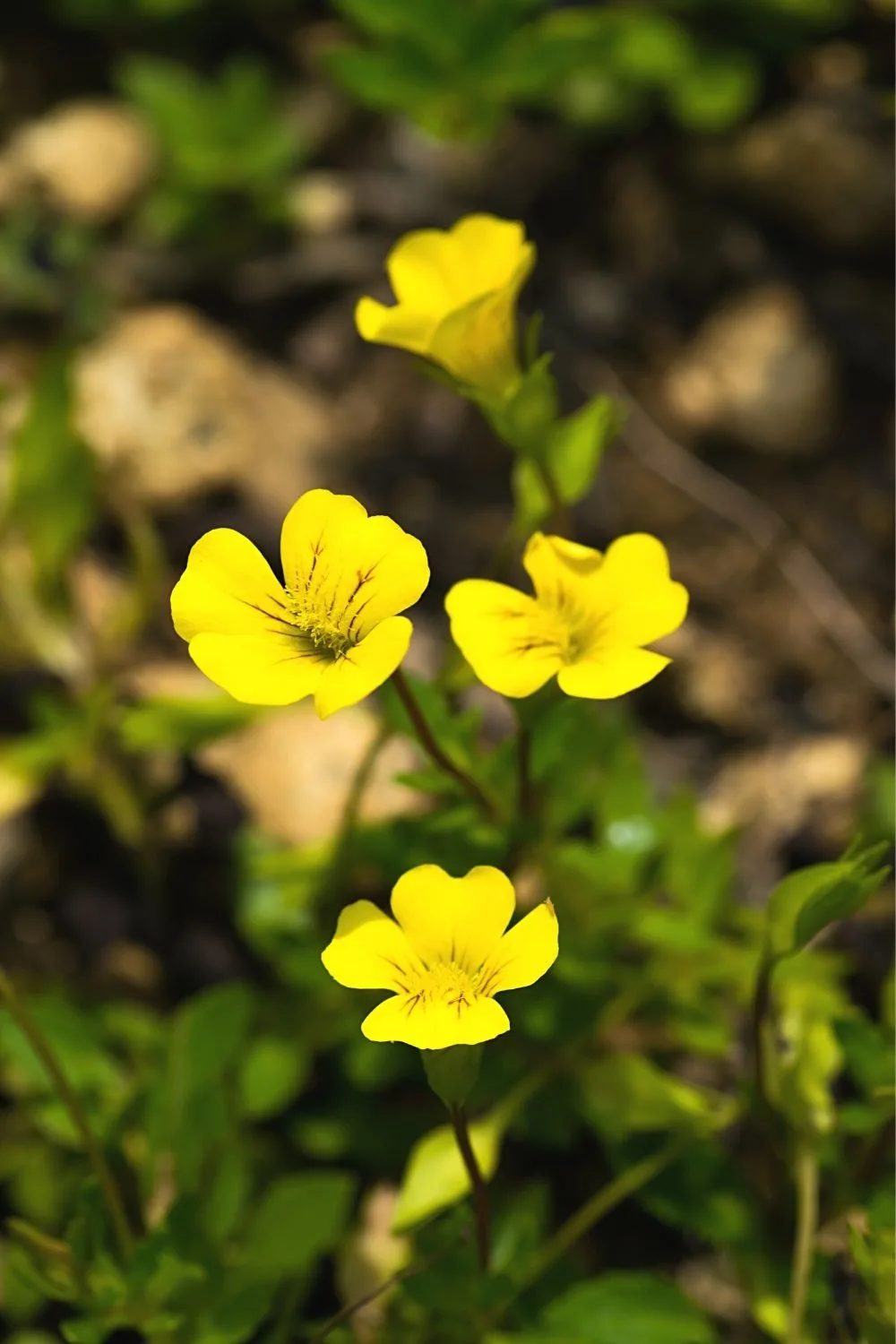
Hailing from the USA and South America, Mecardonias is another beautiful addition to your west-facing balcony
Mecardonia is a small herbaceous plant that can be found in South America and in the United States.
Mecardonia binomial nomenclature and basic plant care requirements include:
- Temperature: 40 to 65 degrees Fahrenheit (4-to-18-degree Celsius)
- Fertilizer: Needs to be fertilized with a balanced fertilizer
- pH: 5.8 to 6.2
- Soil: Needs evenly moist soil
- Lighting: Full Sun to Partial Sun
- Growth rate: moderate growth rate
- Humidity: below 70%
- Scientific name: Mecardonia
- Family: Plantaginaceae
19. Boxwoods
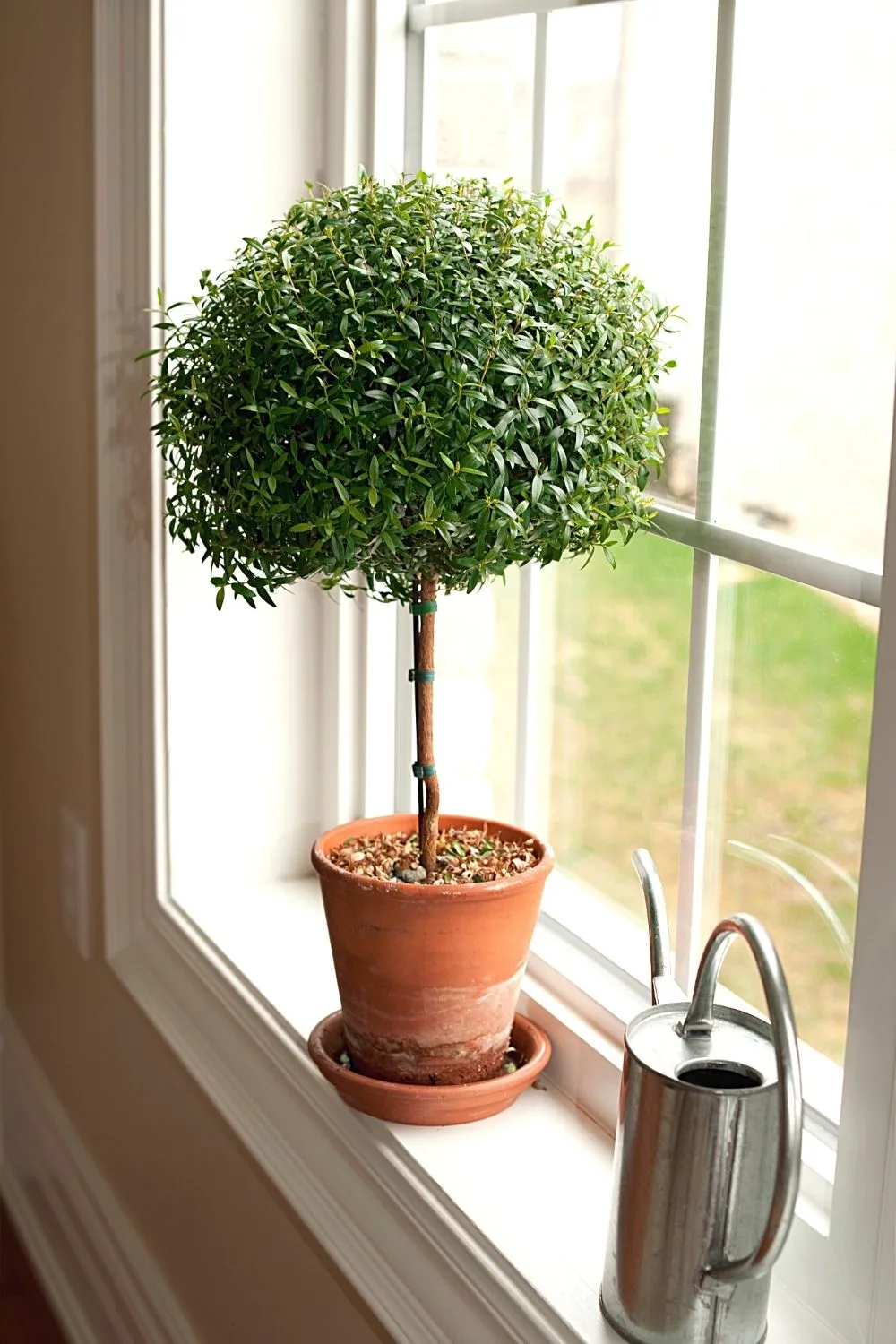
Boxwoods is a small bushy plant you can grow in a pot on a west-facing balcony
Boxwood is a small bushy plant often grown in pots. This plant can be grown as a large bush through years of care, or it can be kept as a tiny bush in a small pot.
Boxwood binomial nomenclature and basic plant care requirements include:
- Temperature: 60 to 80 degrees Fahrenheit (16-to-26-degree Celsius)
- Fertilizer: Needs to be fertilized in late fall or early spring
- pH: 6.5 to 7.0
- Soil: Needs well-draining soil
- Lighting: partial shade
- Growth rate: slow growth rate
- Humidity: No special humidity requirements
- Scientific name: Buxus
- Family: Buxaceae
20. Caladium Aaron
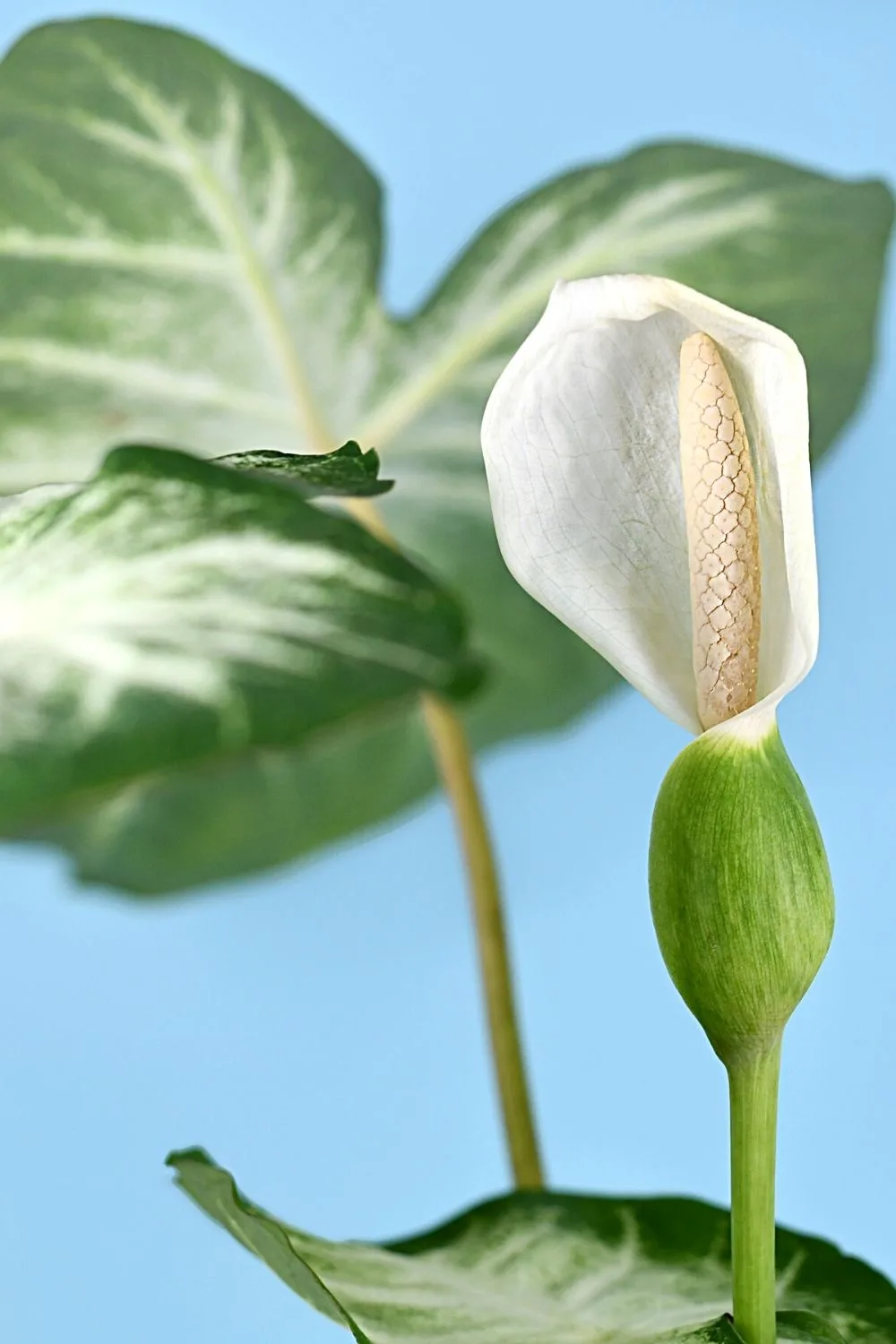
With its leaves having white centers and dark green borders, Caladium Aaron is another beautiful plant you can grow on a west-facing balcony
Caladium Aaron is an upright plant that grows large leaves that have white centers and dark green borders. Its stunning leaves look fresh and beautiful under the summer sun.
Caladium Aaron’s binomial nomenclature and basic plant care requirements include:
- Temperature: around 60 to 75 degrees Fahrenheit (16-to-24-degree Celsius)
- Fertilizer: Needs to be fertilized 4 to 6 weeks during the growing season
- pH: 6.0 to 6.5
- Soil: well-draining soil
- Lighting: Full Sun to Partial Sun
- Growth rate: Fast growth in summer
- Humidity: 70% to 90%
- Scientific name: Caladium Hortulanem
- Family: Araceae
21. Silver Saw Palmetto
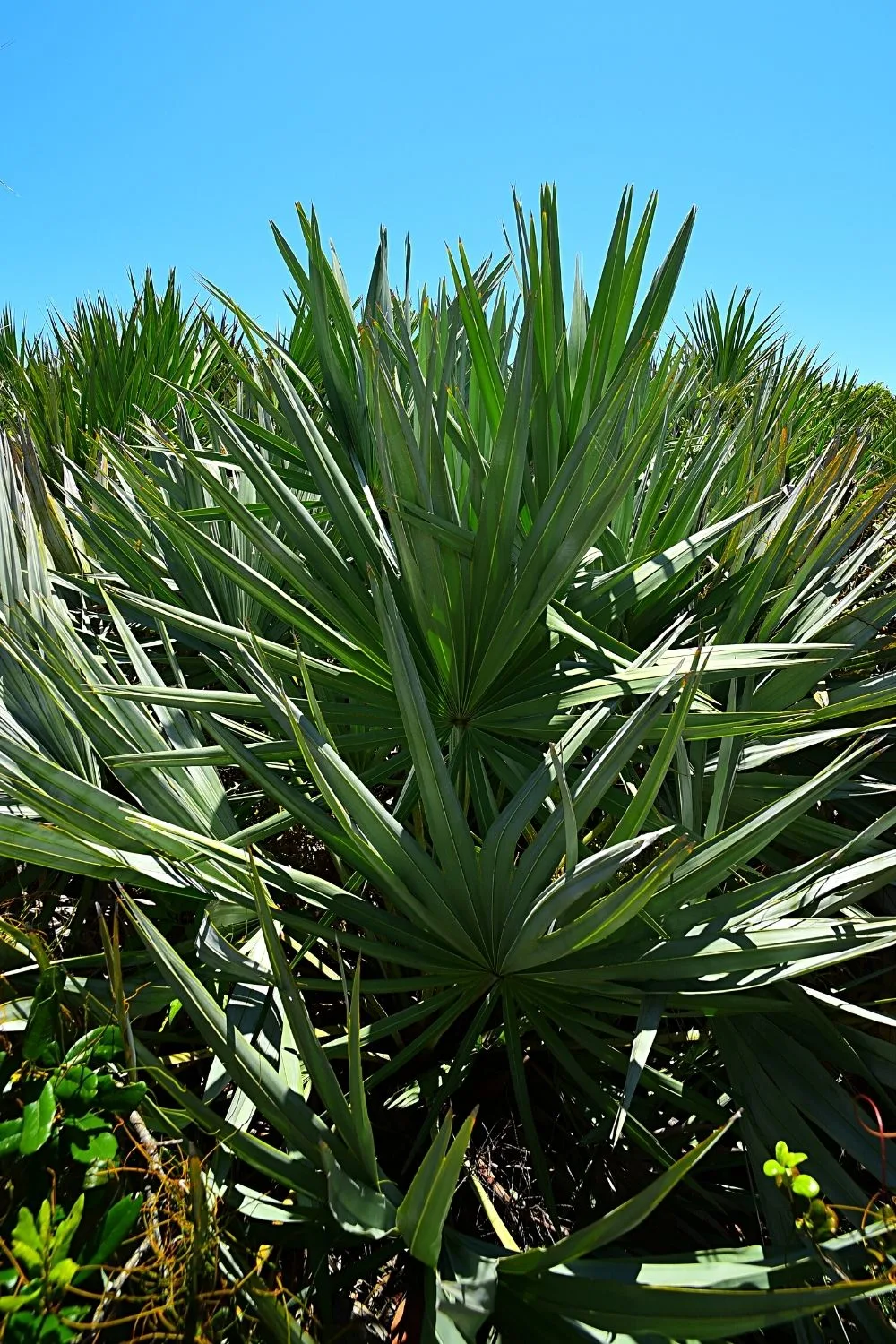
Silver saw palmetto, known for its sword-like leaves, is another stunning plant you can grow on a west-facing balcony
Silver Saw Palmetto is a unique plant grown for its long, sword-like leaves. This plant is mostly grown outdoors, which is why they are the perfect choice for West-facing balconies.
Silver Saw Palmetto binomial nomenclature and basic plant care requirements include:
- Temperature: Cannot survive under 22 degrees Fahrenheit (-5 degrees Celsius)
- Fertilizer: Needs a slow-release fertilizer
- pH: 5.0 to 7.5
- Soil: sandy soils
- Lighting: Light shade to full sun.
- Growth rate: slow growth
- Humidity: can tolerate humid conditions
- Scientific name: Serenoa Repens
- Family: Arecaceae
22. Mandevilla
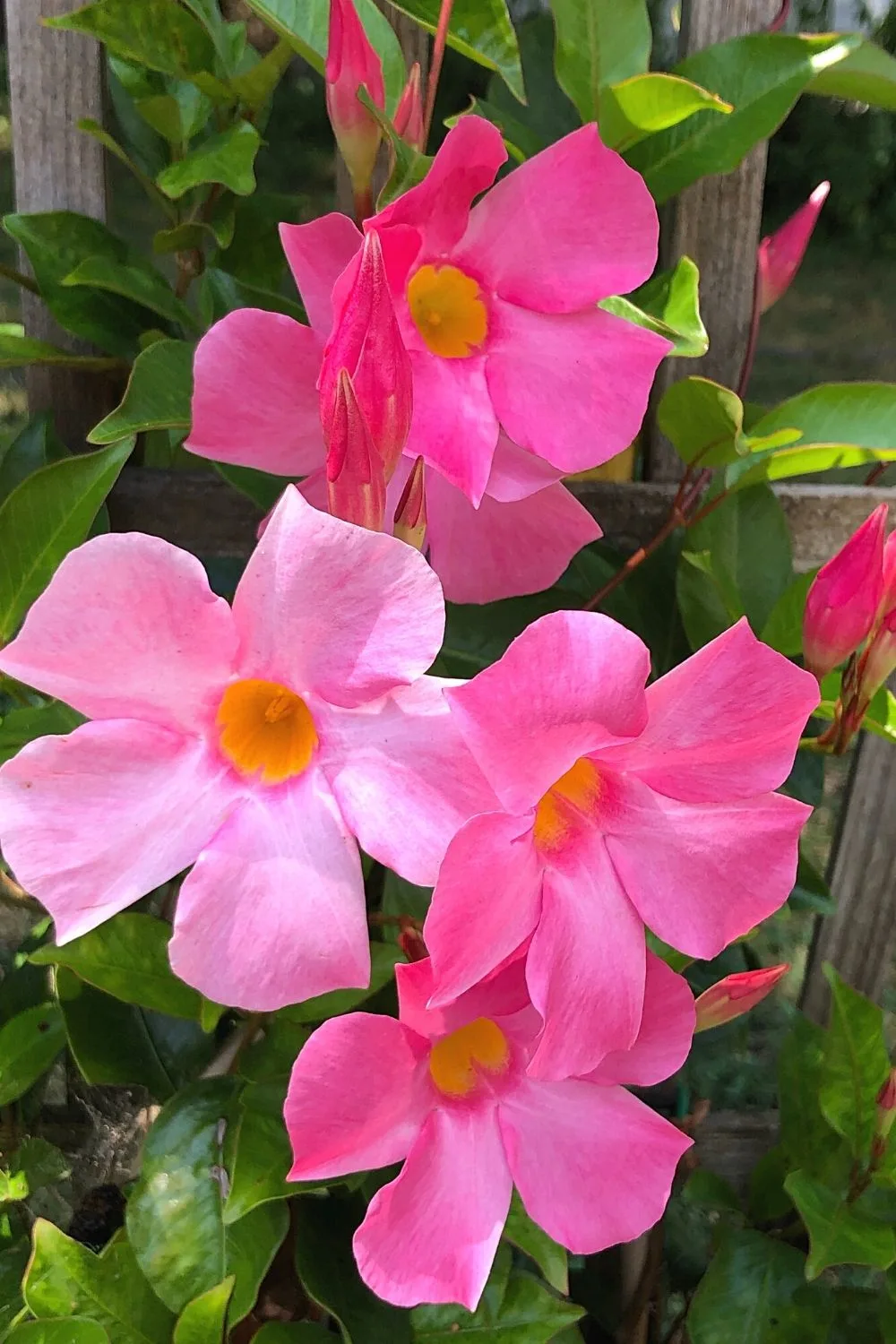
Mandevilla is a climbing plant that you can grow on a supporting beam on your west-facing balcony
Mandevilla is a frost-tender perennial that is often confused as an annual. This beautiful plant can be trained to grow vertically or horizontally since it is a climber and will grow on a supporting beam.
Mandevilla’s binomial nomenclature and basic plant care requirements include:
- Temperature: around 60 to 75 degrees Fahrenheit (16-to-24-degree Celsius)
- Fertilizer: Requires fertilization 2-3 weeks early during the flowering season
- pH: 6.6 to 7.8
- Soil: Needs nutrient-rich soil that is well-draining and sandy
- Lighting: partial shade to full sun
- Growth rate: Fast growth
- Humidity: above 50%
- Scientific name: Mandevilla
- Family: Apocynaceae
23. Sunpatiens
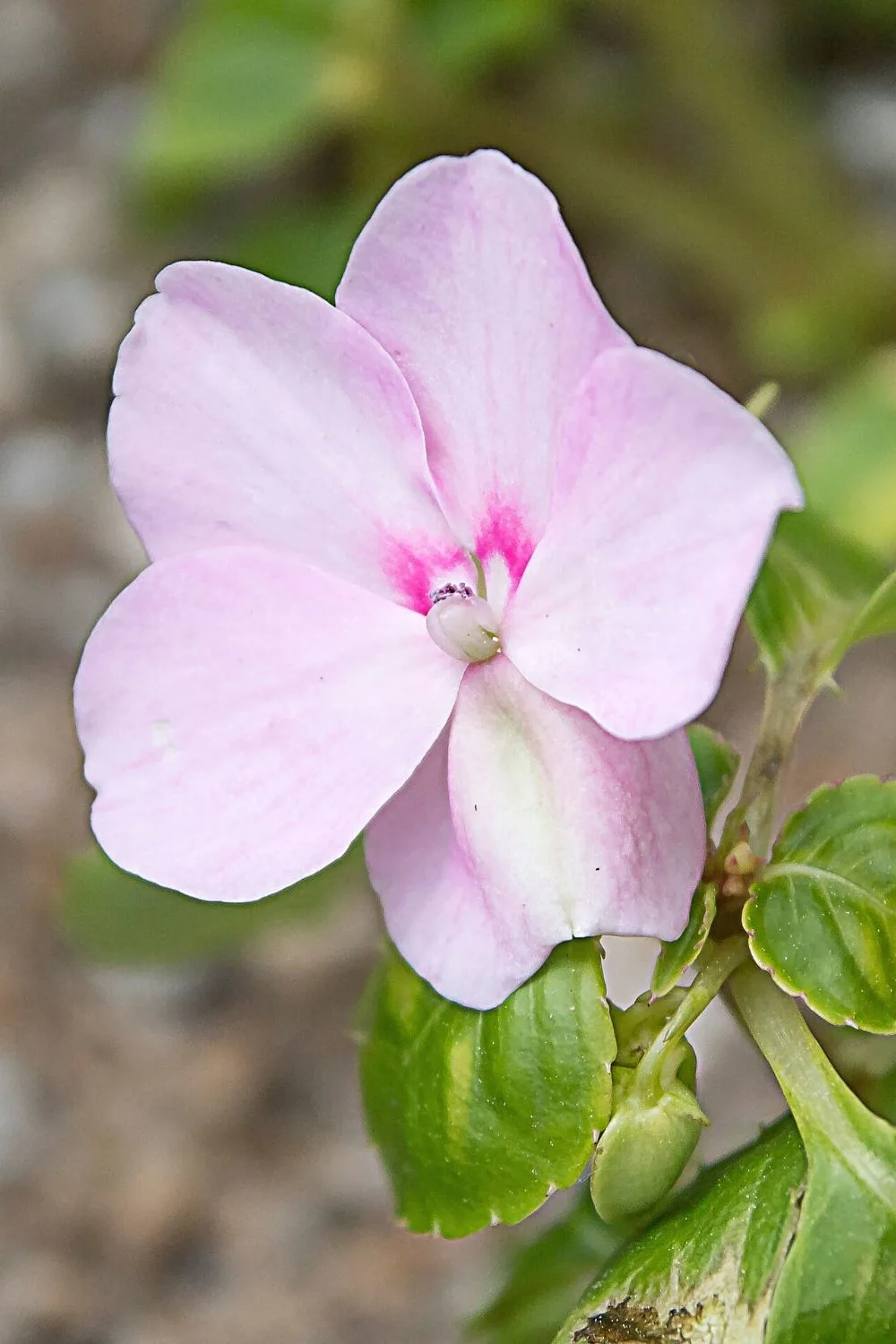
A hybrid of the Impatiens plant, Sunpatiens is another gorgeous flower you can grow on your west-facing balcony
Sunpatiens are a unique plant since they are a hybrid of another plant known as Impatiens.
This stunning plant grabs everyone’s attention due to its wide range of colorful flowers
Sunpatiens binomial nomenclature and basic plant care requirements include:
- Temperature: 60 to 85 degrees Fahrenheit (16-to-29-degree Celsius)
- Fertilizer: Needs fertilization once a month from spring to summer
- pH: 5.8 to 6.2
- Soil: does not require high rates of fertilizer
- Lighting: full sun
- Growth rate: slow growth
- Humidity: below 70%
- Scientific name: Impatiens hawkeri hybrid
- Family: SunPatiens
24. English Ivy
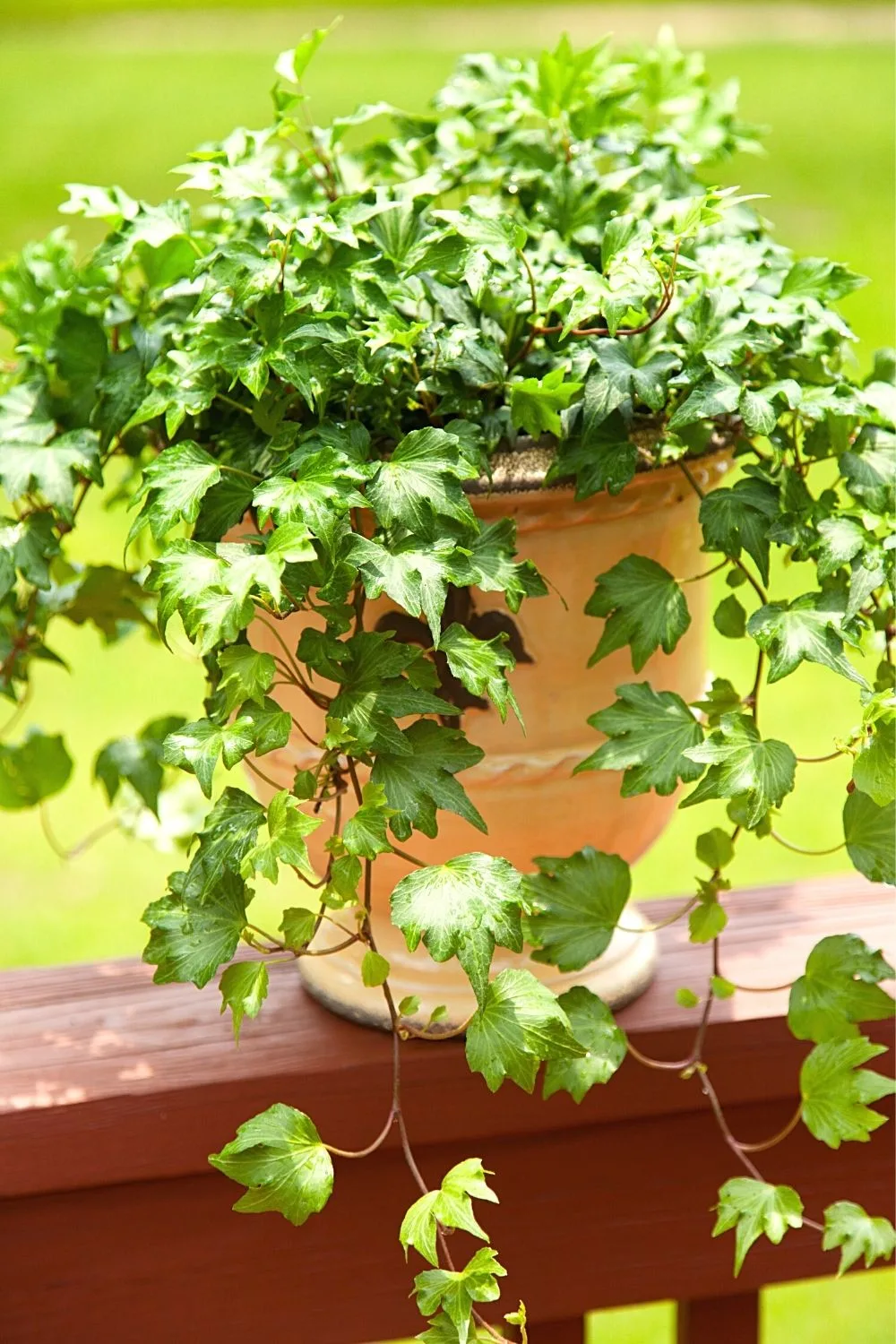
English ivy, known to be an outdoor plant, can be grown on a west-facing balcony close to walls and balconies
The English ivy, also known as common ivy, is a simple climbing plant that is often planted outdoors on balconies or close to walls.
Their ability to trail up any sporting beam allows them to sprout their leaves and make any space more vibrant.
English ivy’s binomial nomenclature and basic plant care requirements include:
- Temperature: around 70 to 90 degrees Fahrenheit (21-to-32-degree Celsius)
- Fertilizer: Needs fertilization every two weeks from spring to summer
- pH: 6.5 to 7.5
- Soil: Needs well-drained soil
- Lighting: adapts to any amount of sunlight from full sun to full shade
- Growth rate: Fast growth rate
- Humidity: 40% or higher
- Scientific name: Hedera helix
- Family: Araliaceae
25. Dwarf Papyrus
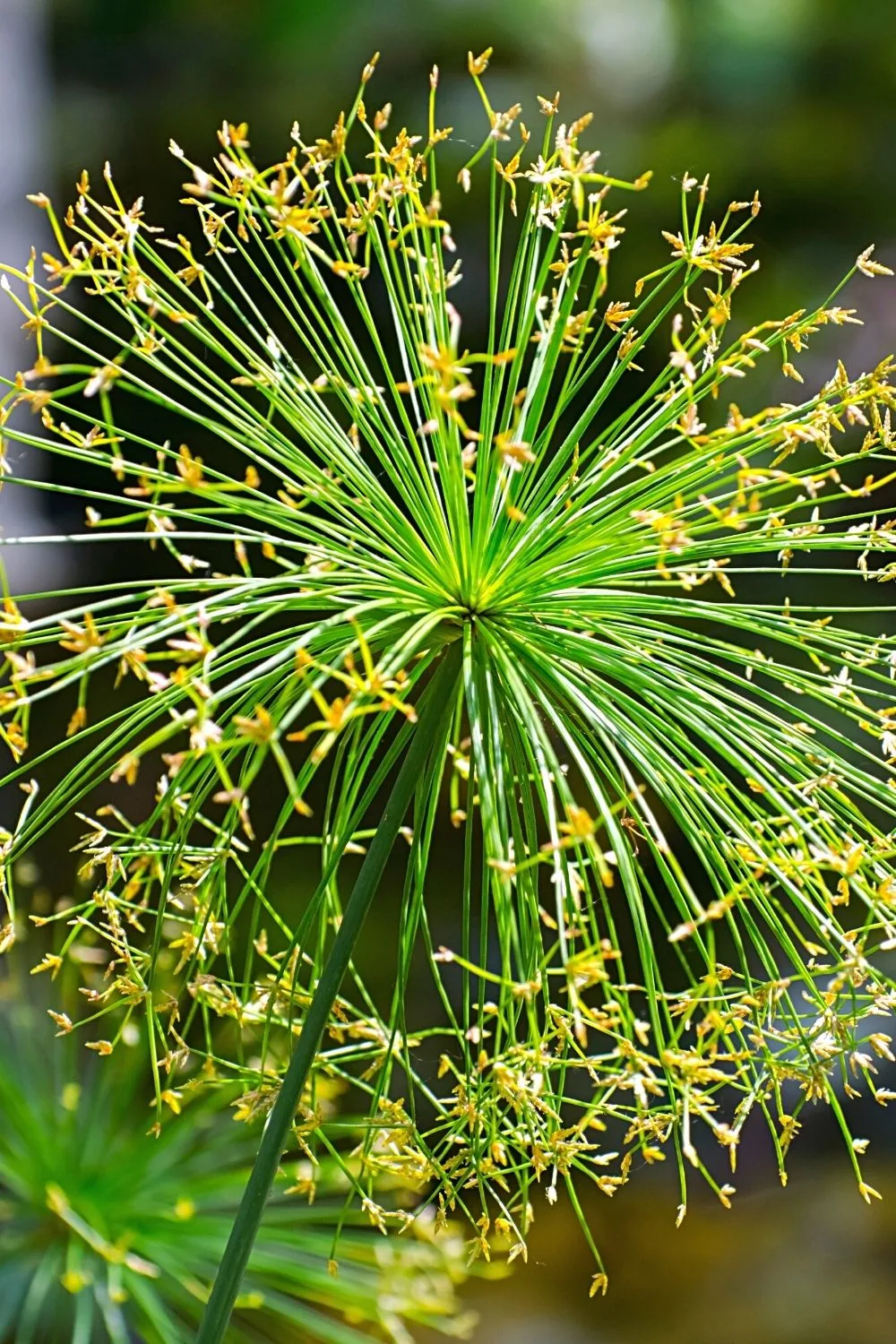
Dwarf papyrus, a smaller version of the famous Egyptian Papyrus plant, is a great addition to your west-facing balcony
The Dwarf Papyrus is a diminutive form of the famous Egyptian Papyrus plant.
As the name suggests, Dwarf Papyrus is just a miniature version of a much larger plant.
If provided with certain living conditions, the Dwarf Papyrus can grow to be a tall plant or a compact, bushy plant.
Dwarf Papyrus binomial nomenclature and basic plant care requirements include:
- Temperature: around 60 to 65 degrees Fahrenheit (16-to-18-degree Celsius)
- Fertilizer: does not require any feeding if grown in fertile soil
- pH: 7.0 to 8.0
- Soil: Needs loamy or clay soil
- Lighting: Partial shade to full sun
- Growth rate: Fast growth
- Humidity: do not require extra humidity
- Scientific name: Cyperus papyrus
- Family: Cyperaceae
26. Euphorbia
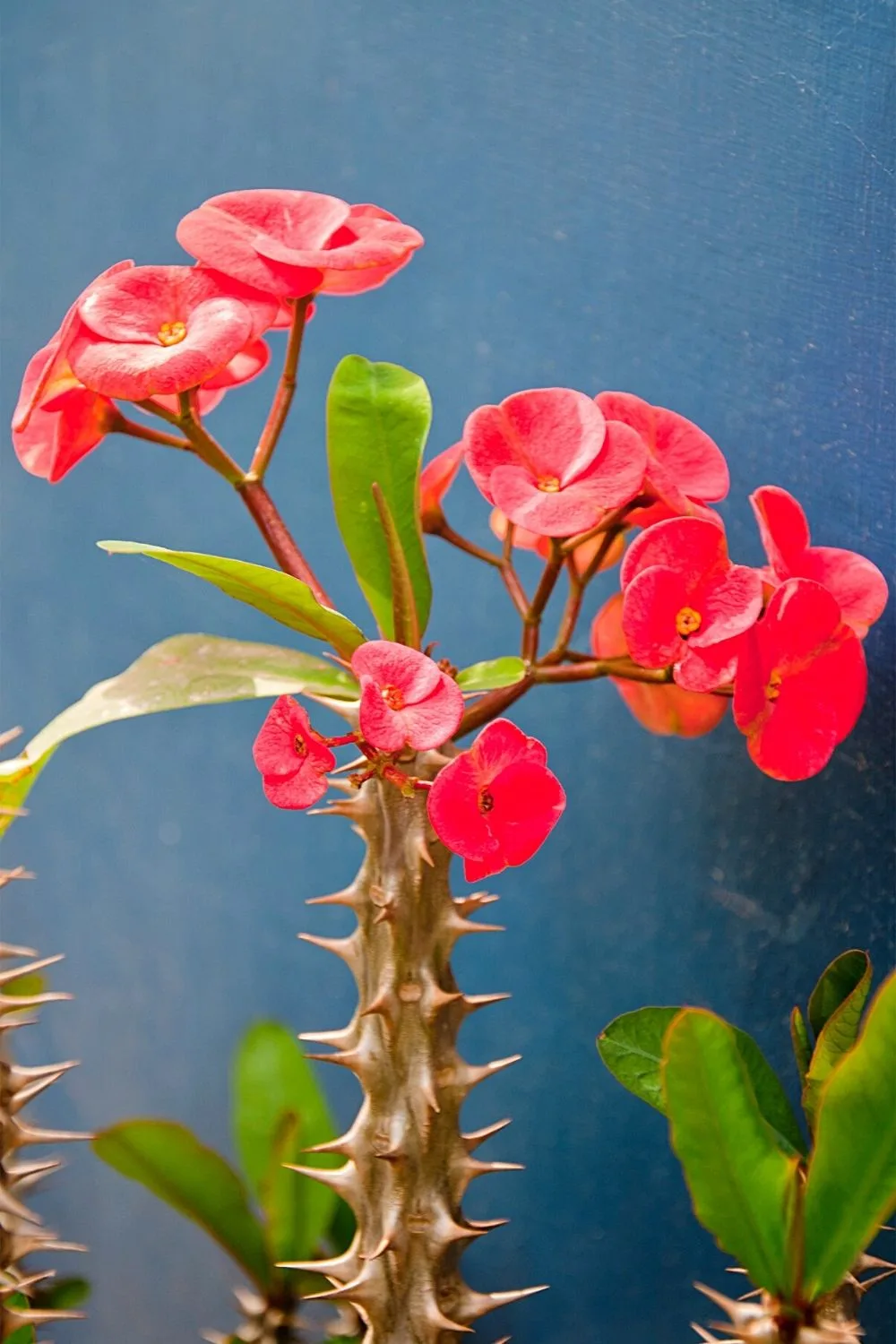
Euphorbia is another flowering plant that you can grow on your west-facing balcony
Euphorbia is part of a large genus of flowering plants that come in different varieties.
You will find Euphorbias that grow long purple leaves, while others grow tiny yellow flowers.
The type of genus you plant will determine what your Euphorbia will look like once it grows.
Euphorbias binomial nomenclature and basic plant care requirements include:
- Temperature: around 55 to 80 degrees Fahrenheit (13-to-27-degree Celsius)
- Fertilizer: Needs a balanced fertilizer right before early spring
- pH: 5.5 to 6.5
- Soil: sandy soil
- Lighting: bright light for 6 hours
- Growth rate: Fast to moderate growth
- Humidity: 30% to 45%
- Scientific name: Euphorbia
- Family: Euphorbiaceae
27. Sago Palms

Sago palms, with their feathery foliage, are great addition to your growing west-balcony plant collection
Sago Palms are grown for their famous feathery foliage that looks stunning under bright sunlight.
Other than being a gorgeous plant, Sago Palms are easy to care for and can make any space more vibrant.
Sago Palms binomial nomenclature and basic plant care requirements include:
- Temperature: 65 to 75 degrees Fahrenheit (18-to-24degree Celsius)
- Fertilizer: Needs fertilization once a month from spring to summer
- pH: 5.5 to 6.5
- Soil: well-draining soil, sandy, and moist soil
- Lighting: Full to partial shade
- Growth rate: slow growth
- Humidity: 80% to 90%
- Scientific name: Cycas Revoluta
- Family: Cycadaceae
28. Colocasia
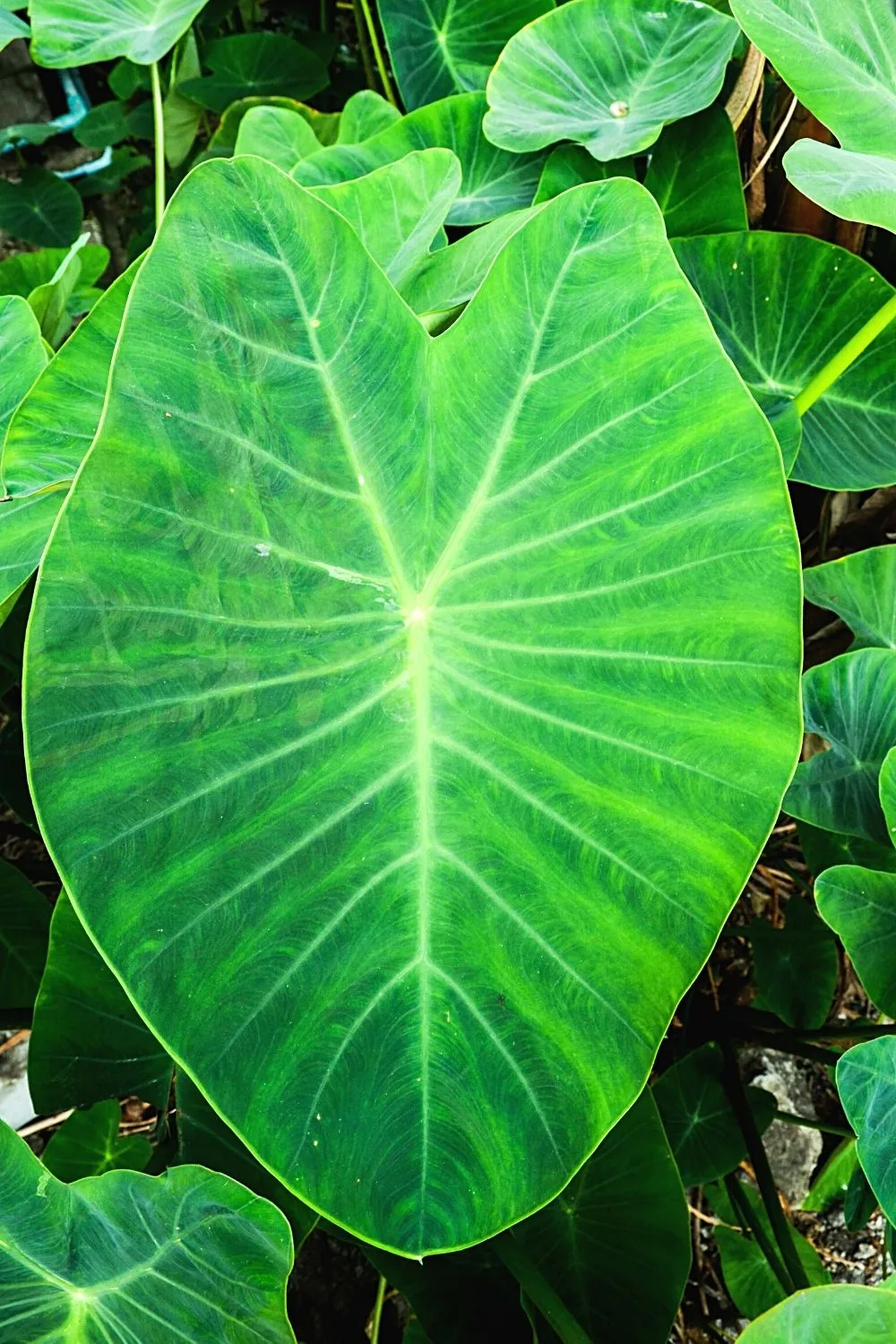
Though Colocasia is a flowering plant, it’s commonly grown on west-facing balconies due to its large green leaves
Colocasia, also known as Taro, is another flowering plant that is mostly grown for its large leaves.
This plant has leaves that grow in several different colors ranging from dark green to black coral.
Colocasia’s binomial nomenclature and basic plant care requirements include:
- Temperature: 65 to 75 degrees Fahrenheit (18-to-24degree Celsius)
- Fertilizer: Needs fertilization once a month with a slow-release fertilizer
- pH: 5.5 to 7.0
- Soil: Needs moist soil
- Lighting: Partial shade
- Growth rate: Fast
- Humidity: 70% to 90%
- Scientific name: Colocasia
- Family: Araceae
29. Calibrachoa
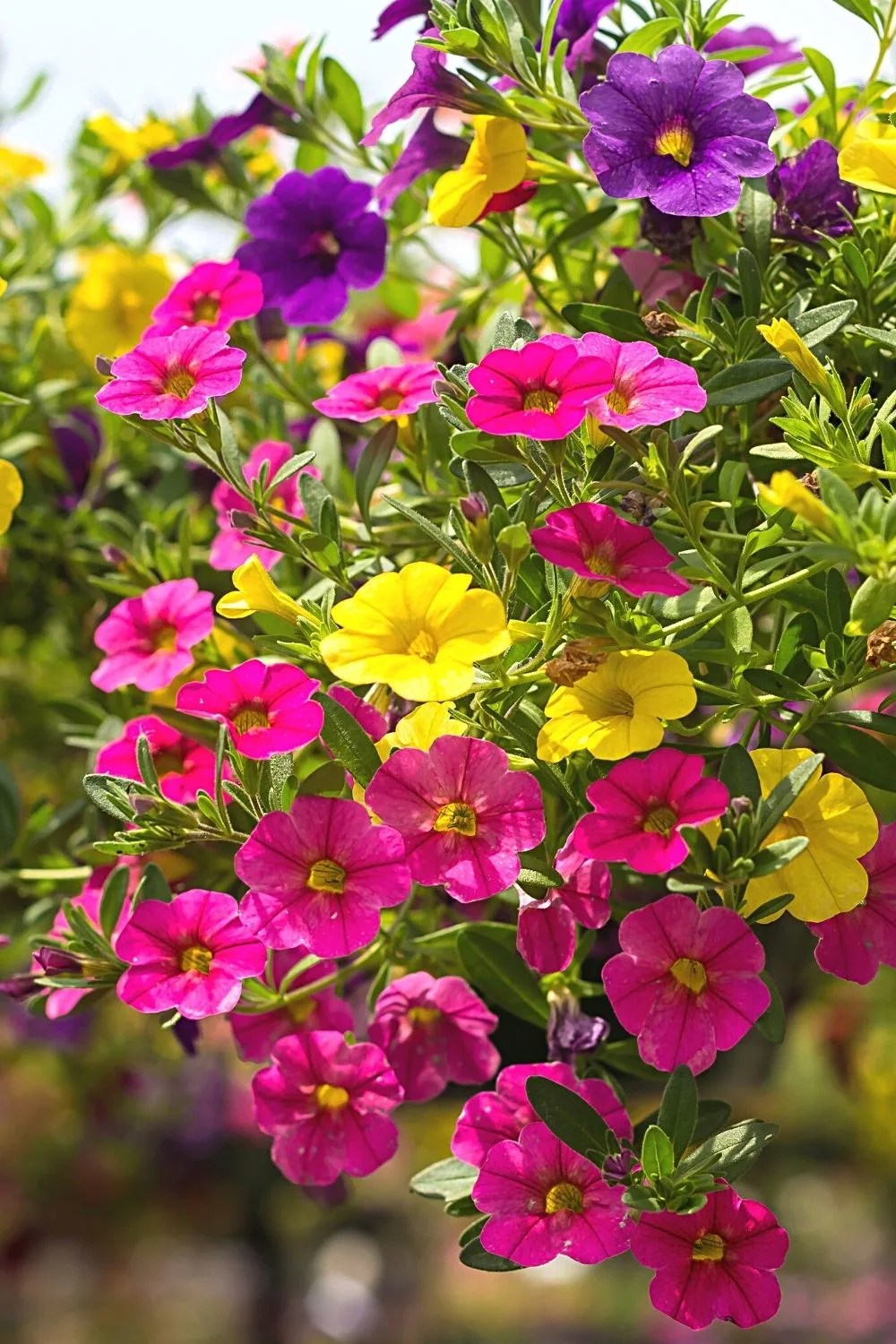
Calibrachoa is another flowering plant that you can grace your west-facing balcony with
Calibrachoa, also commonly referred to as million bells, is a popular flowering plant that is mostly grown outdoors.
This beautiful plant is able to sprout flowers in many colors, such as:
- Pink
- Coral
- Orange
- Red
- Purple
- White
- Yellow
Calibrachoas binomial nomenclature and basic plant care requirements include:
- Temperature: 55 to 65 degrees Fahrenheit (13-to-18-degree Celsius)
- Fertilizer: Needs to be fertilized every other week with a slow-release fertilizer
- pH: 5.0 to 6.5
- Soil: Well-draining, moist, and rich in organic matter soil
- Lighting: Full sun to part shade
- Growth rate: Fast growth
- Humidity: 40% to 65%
- Scientific name: Calibrachoa
- Family: Solanaceae
30. Ageratum

Ageratum, with its pompom-shaped flowers, is a beautiful addition to your west-facing balcony plant collection
Ageratum is grown for its unique pompom-shaped flowers that bloom in several colors, such as white, pink, red, lavender, and blue.
Ageratum is very easy to grow and does not require a lot of attention.
Ageratums binomial nomenclature and basic plant care requirements include:
- Temperature: 78 to 82 degrees Fahrenheit (25-to-28-degree Celsius)
- Fertilizer: Needs a 50/50% ratio of soil and compost
- pH: 6.0 to 7.5
- Soil: Needs nutrient-rich soil that is well-draining
- Lighting: full-sun to partial shade
- Growth rate: Fast
- Humidity: 40% to 65%
- Scientific name: Ageratum
- Family: Asteraceae
Conclusion About Best Potted Plants for West-Facing Balcony
All the plants listed above are a must-have in everyone’s plant collection. While all of them are tolerant to strong sunlight, some of them need more maintenance than others.
The best way to ensure that each of your plants is getting the care they require is by creating a schedule that states the time for watering and fertilizing your plants.

Daniel has been a plant enthusiast for over 20 years. He owns hundreds of houseplants and prepares for the chili growing seasons yearly with great anticipation. His favorite plants are plant species in the Araceae family, such as Monstera, Philodendron, and Anthurium. He also loves gardening and is growing hot peppers, tomatoes, and many more vegetables.

![30 Potted Plants for West-Facing Balcony — Best Guide [2024]](https://plantophiles.com/wp-content/uploads/2022/04/30-Potted-Plants-for-West-Facing-Balcony-720x405.jpg.webp)
